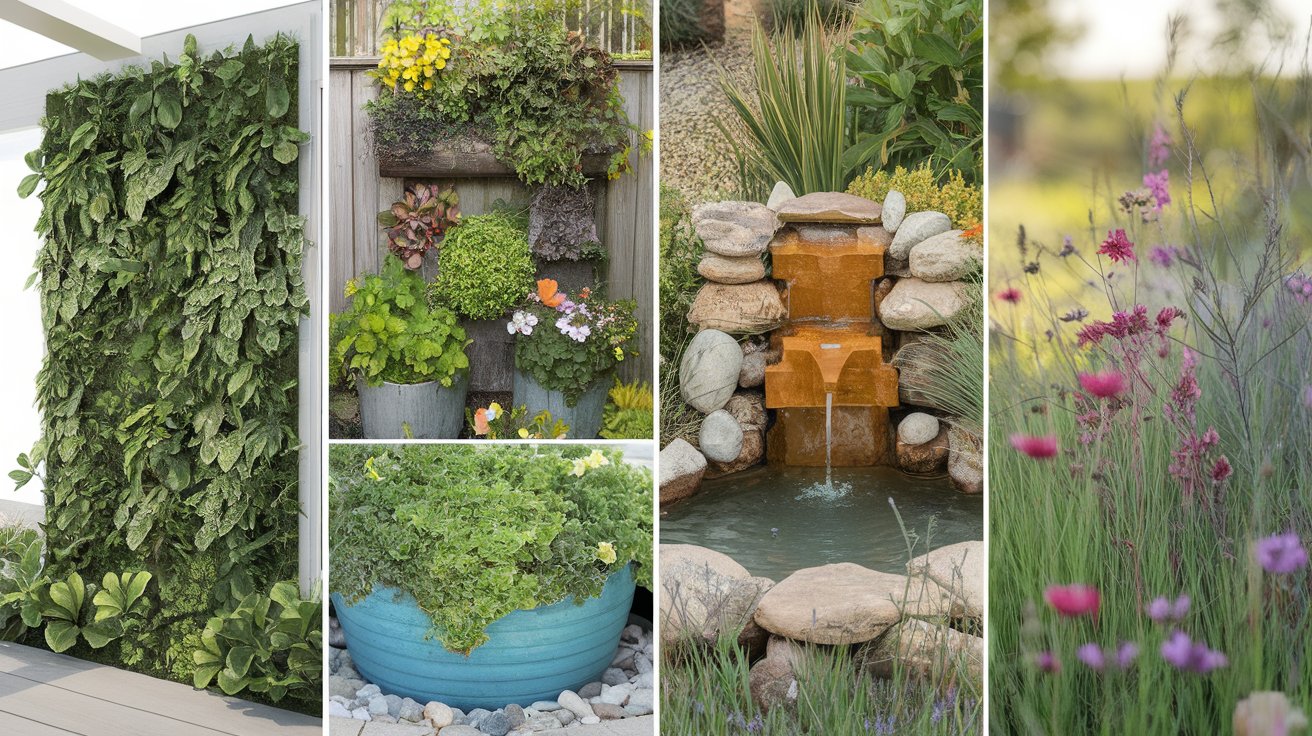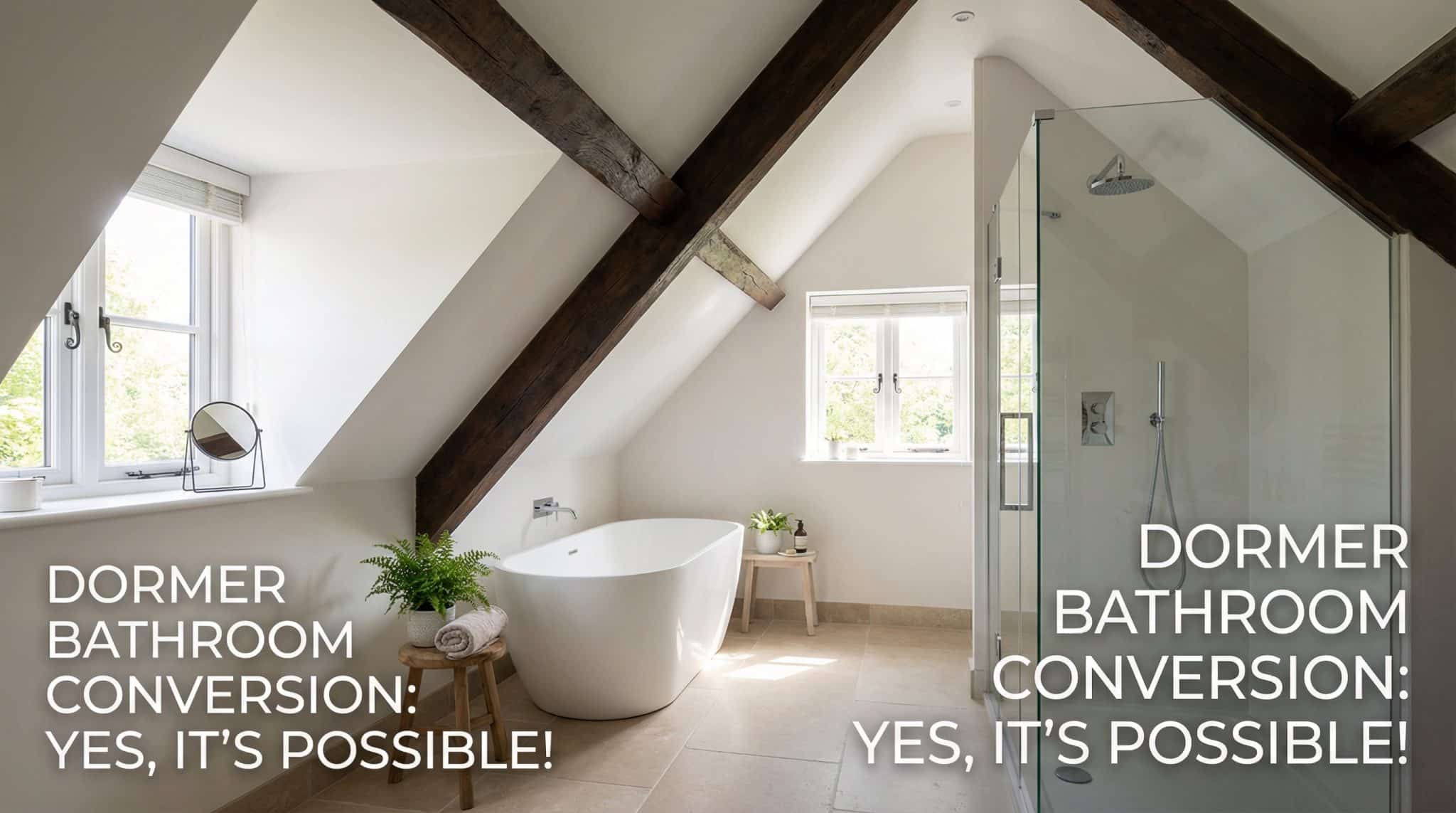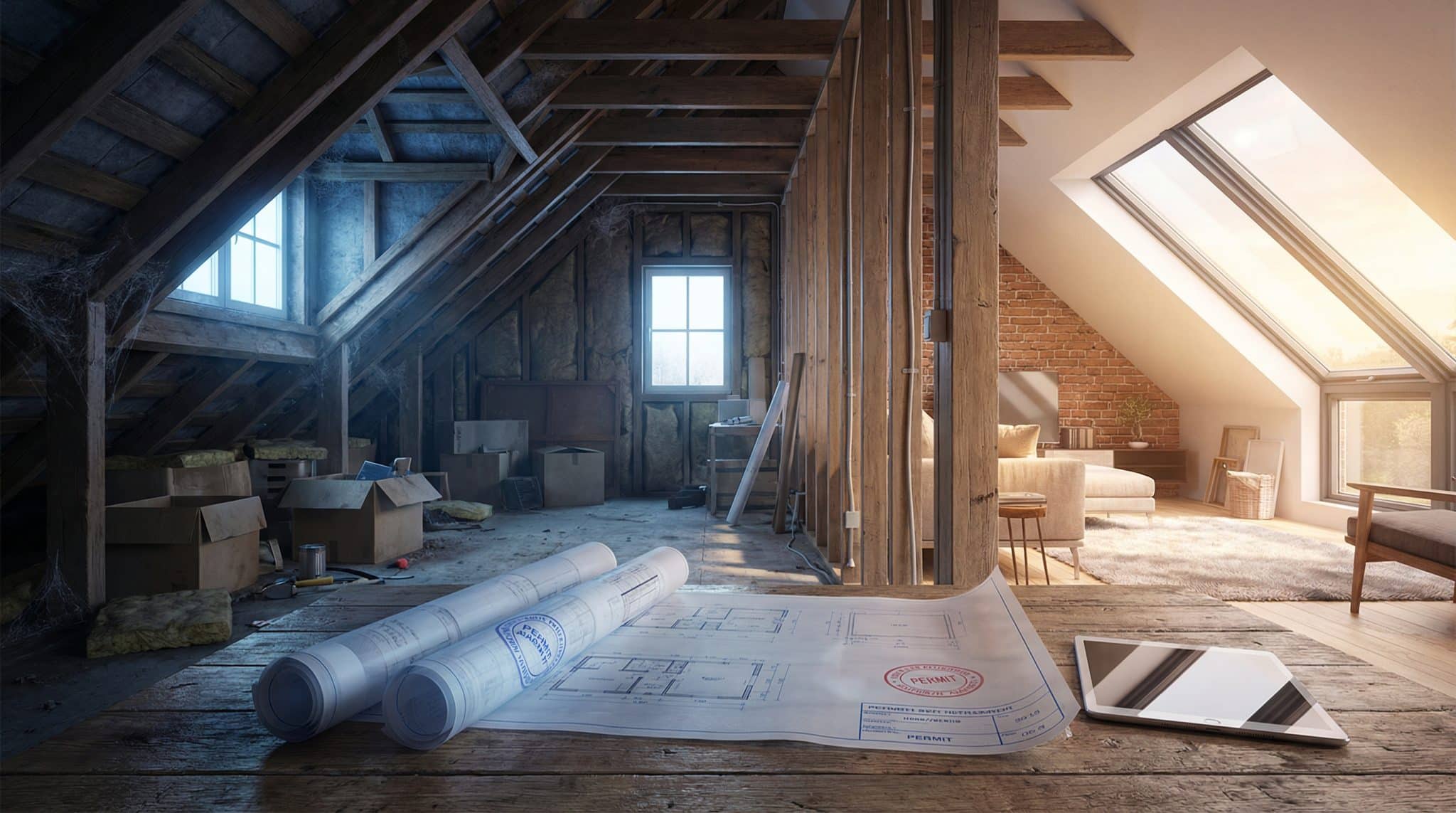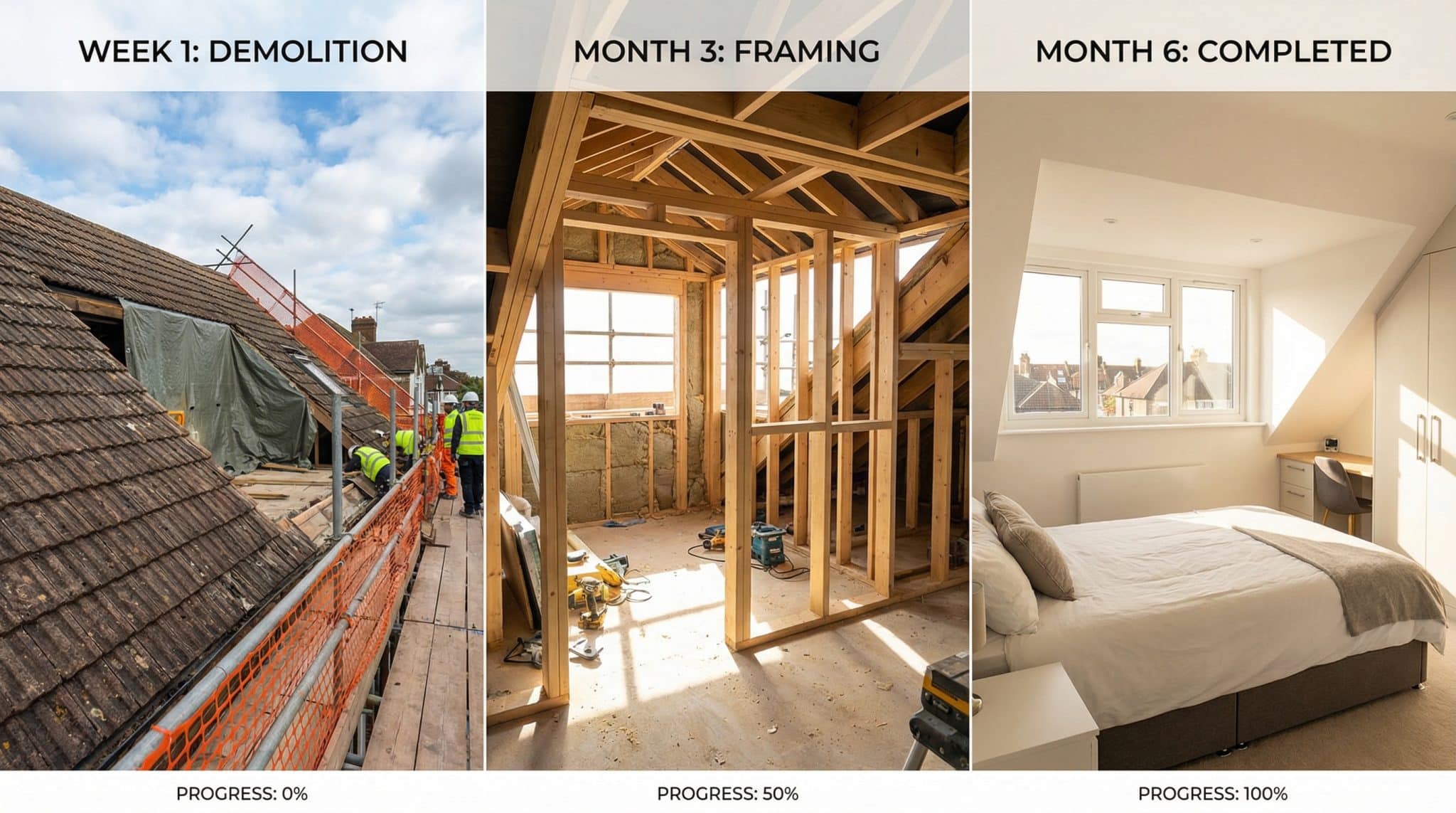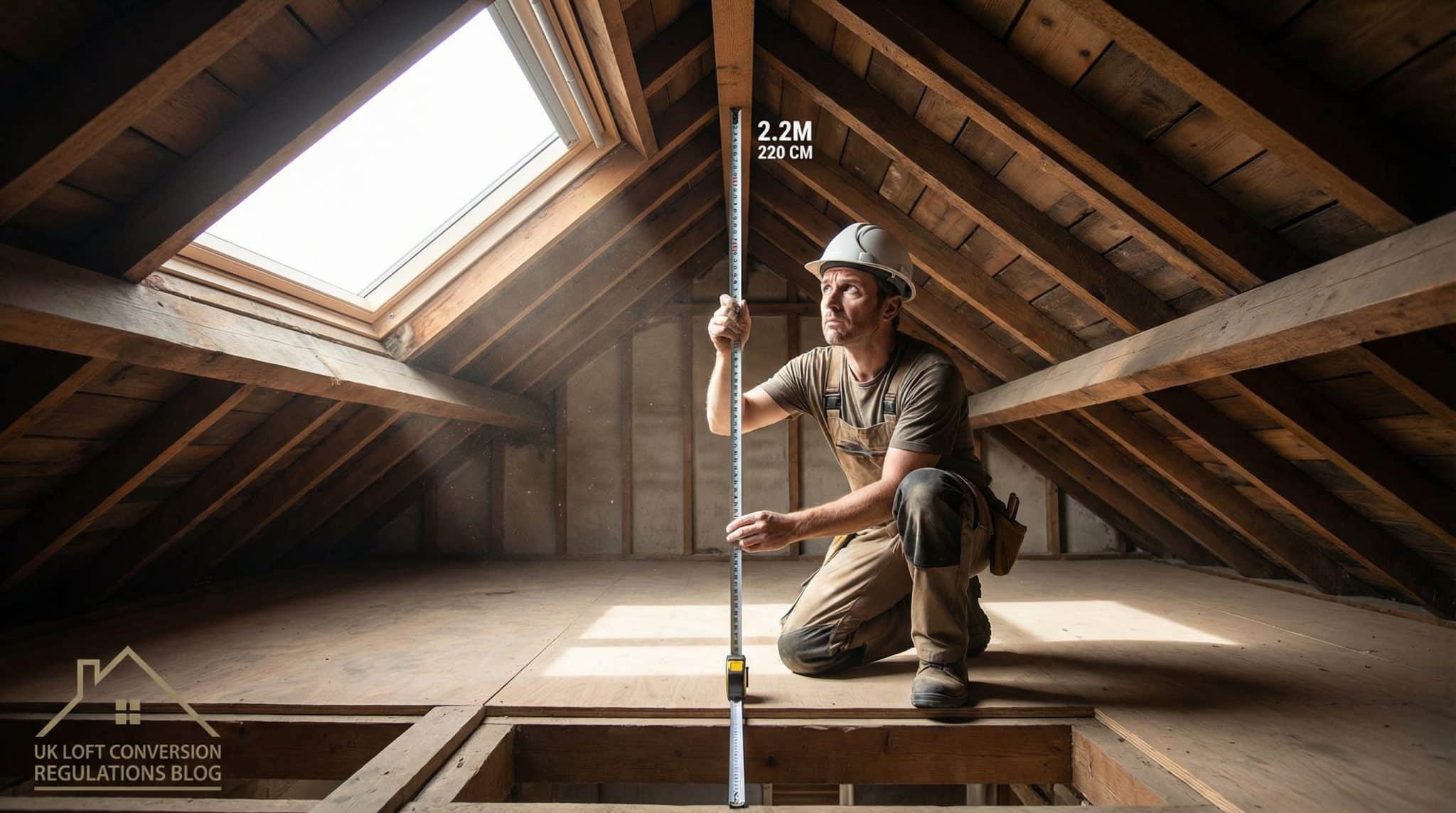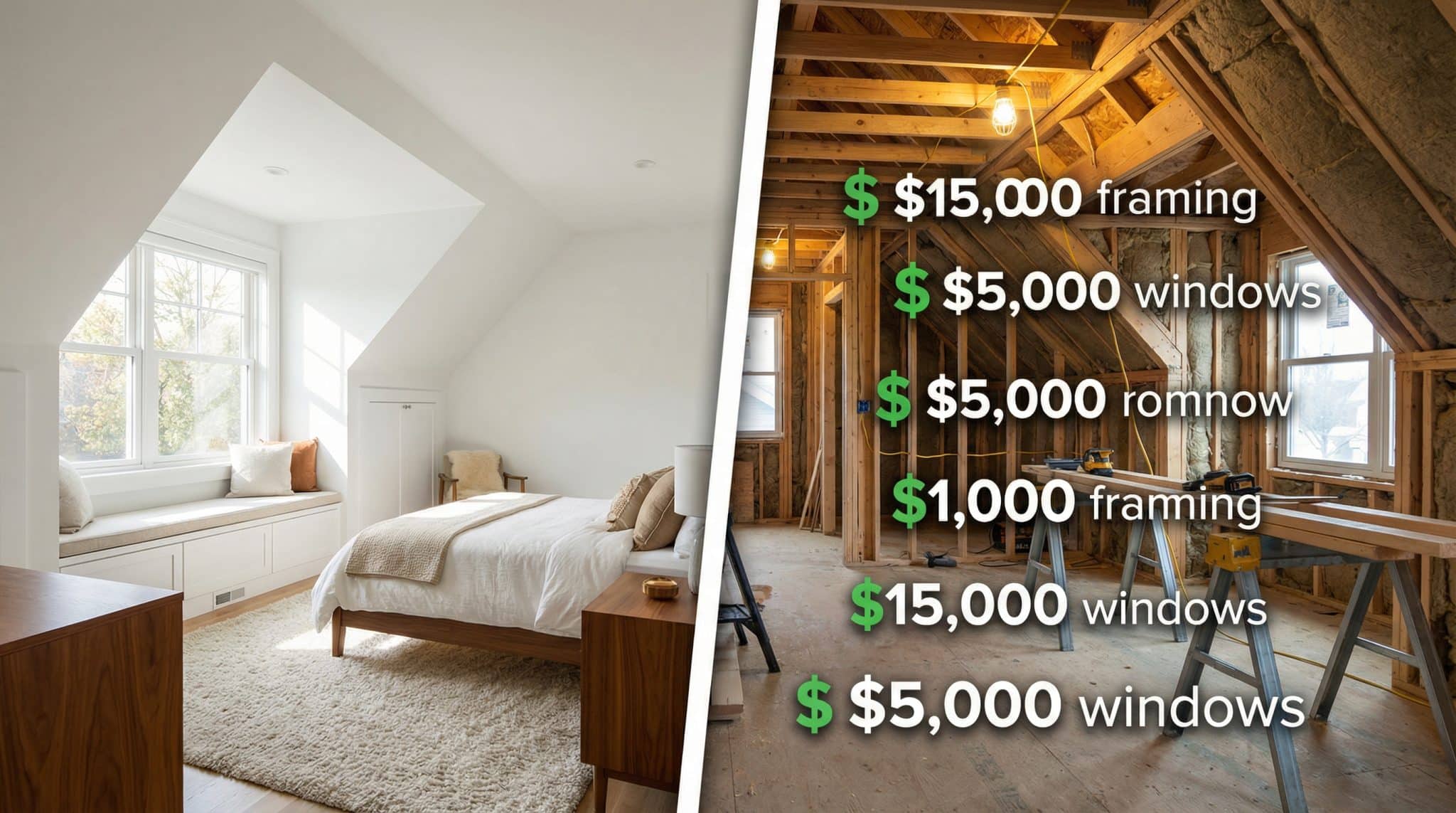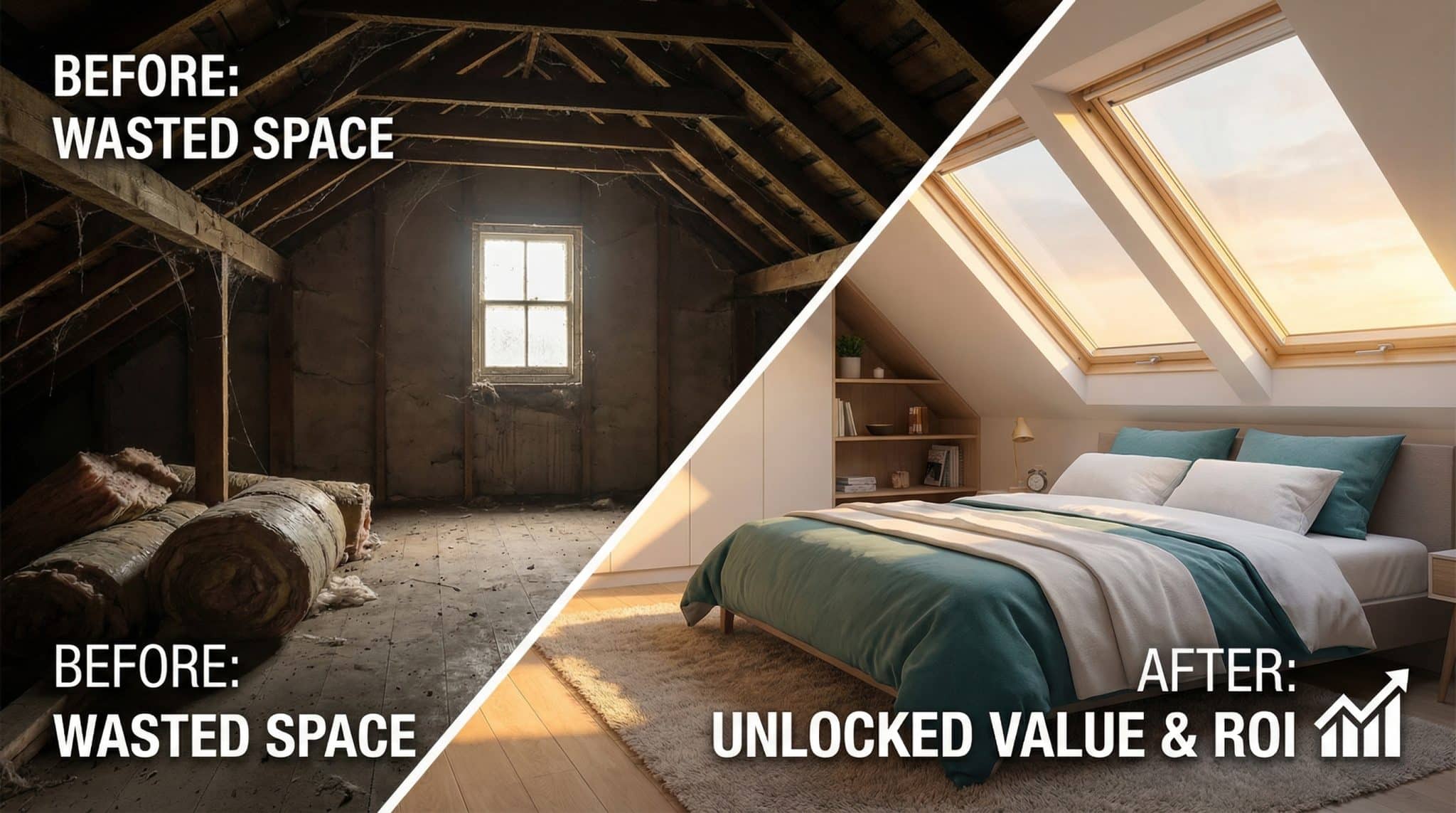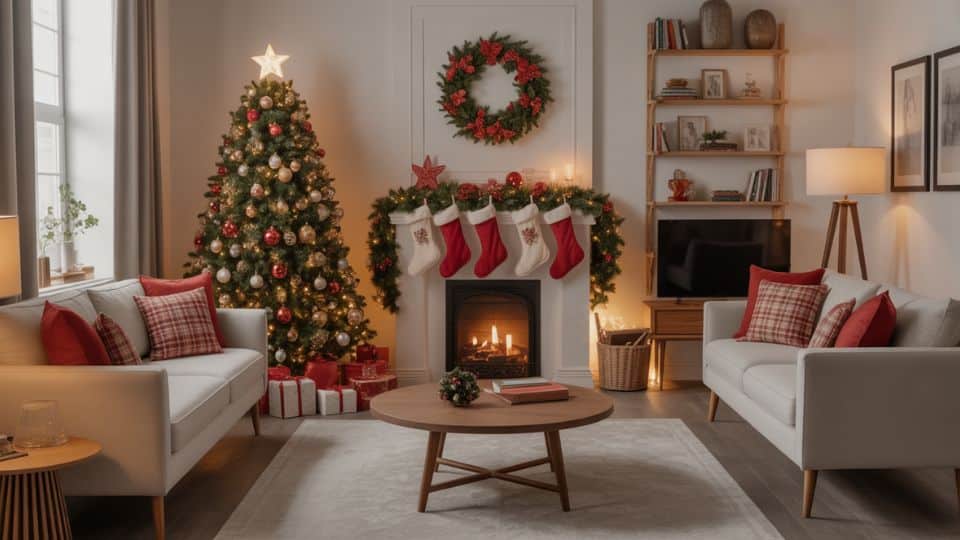Do you dream of having a lush garden but feel limited by your small space?
Many people think they need large yards to grow beautiful plants, herbs, or vegetables. The truth is, compact areas offer unique opportunities for creative gardening solutions.
With the right approach, your tiny balcony, patio, or courtyard can become a thriving green sanctuary filled with life.
This guide shares practical small garden ideas to maximize every square foot of your outdoor area.
From space-saving vertical walls to charming container arrangements, you’ll find out versatile solutions that match your style and maintenance level.
Ready to see how small spaces can yield surprisingly big results?
How to Choose the Right Small Garden Design?
Choosing the right design for your small garden ideas starts with understanding your space. Check sunlight hours and identify if you have a balcony, patio, or yard.
Your lifestyle matters too. Think about how much time you can spend caring for plants. Some gardens need daily attention while others thrive with weekly care.
Key Factors to Consider
- Available sunlight: Track how many hours of direct sun your space gets. Full sun means 6+ hours daily, partial shade gets 3-6 hours, and full shade receives less than 3 hours.
- Space dimensions: Measure your area’s exact length, width, and height. Vertical space often goes unused, but it can double your growing area with wall planters or shelves.
- Weight limits: Balconies and rooftops have load restrictions. Check with your building manager before adding heavy pots, soil, or water features.
- Water access: Locate your nearest water source. Carrying watering cans gets tiring, so consider installing drip irrigation or choosing drought-tolerant plants for distant spots.
- Local climate: Research your hardiness zone and typical weather patterns. Pick plants that naturally thrive in your temperature range and rainfall amounts.
- Budget: Calculate costs for containers, quality soil, plants, and tools. Start small with affordable options, then invest in permanent features as you gain experience.
- Purpose: Define your garden goals clearly. Growing fresh herbs saves money, flowers add beauty, and vegetables provide healthy food for your table.
Start small and expand as you learn what works. Test different plant types in various spots before committing to a full design.
Success comes from matching your garden style to your specific conditions and needs.
31 Creative Small Garden Ideas
Convert your compact space with these creative small garden ideas that prove size doesn’t limit beauty. Each suggestion works perfectly for balconies, patios, or tiny yards.
1. Wall-Mounted Vertical Garden
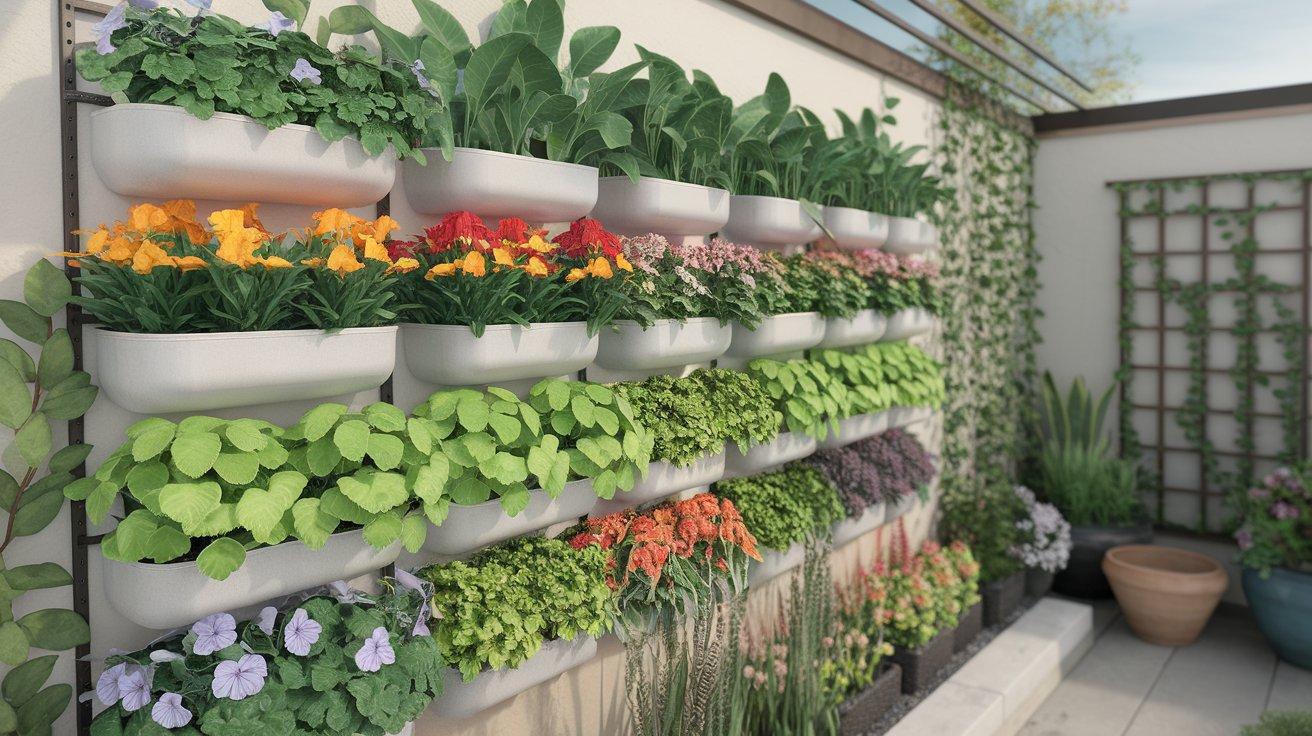
Turn blank walls into lush living art with pocket planters or modular panels, perfect for decorative greenery and colorful flowers. Fill with herbs, succulents, or trailing plants for a green wall effect.
This method works well for renters since most systems can be removed easily. Choose lightweight options for easier installation and maintenance. Regular feeding keeps plants healthy in limited soil.
2. Hanging Flower Baskets
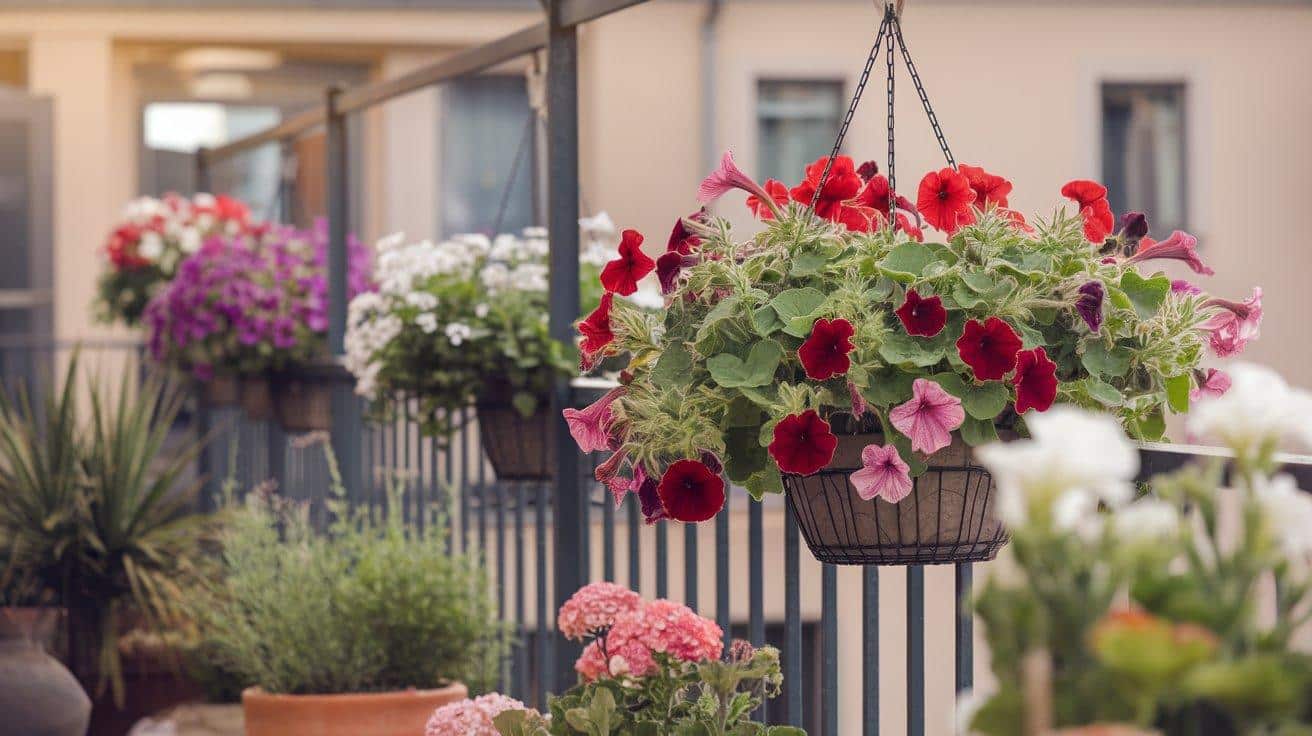
Suspend colorful baskets from hooks, brackets, or shepherd’s crooks. Mix trailing petunias with upright geraniums for fullness. Water daily during hot weather since hanging baskets dry out faster.
Coconut fiber liners look natural and retain moisture better than plastic. Rotate baskets weekly for even growth on all sides. Add slow-release fertilizer beads for continuous blooming.
3. Balcony Herb Garden
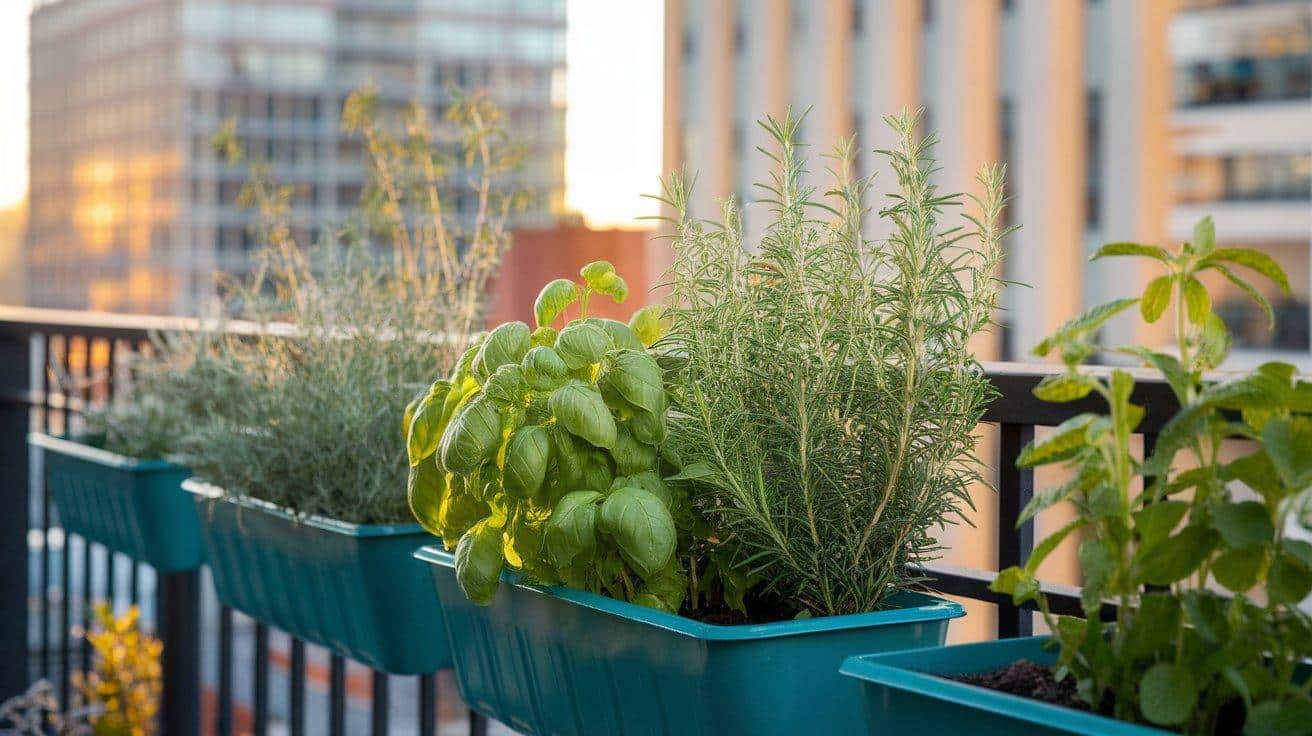
Grow fresh herbs in railing planters or small pots. Basil, mint, parsley, and chives thrive in containers. Position near your kitchen door for easy harvesting while cooking.
Group herbs by water needs to simplify care routines. Mediterranean herbs like rosemary prefer drier soil than moisture-loving basil. Pinch tips regularly to encourage bushy growth.
4. Geometric Succulent Pots
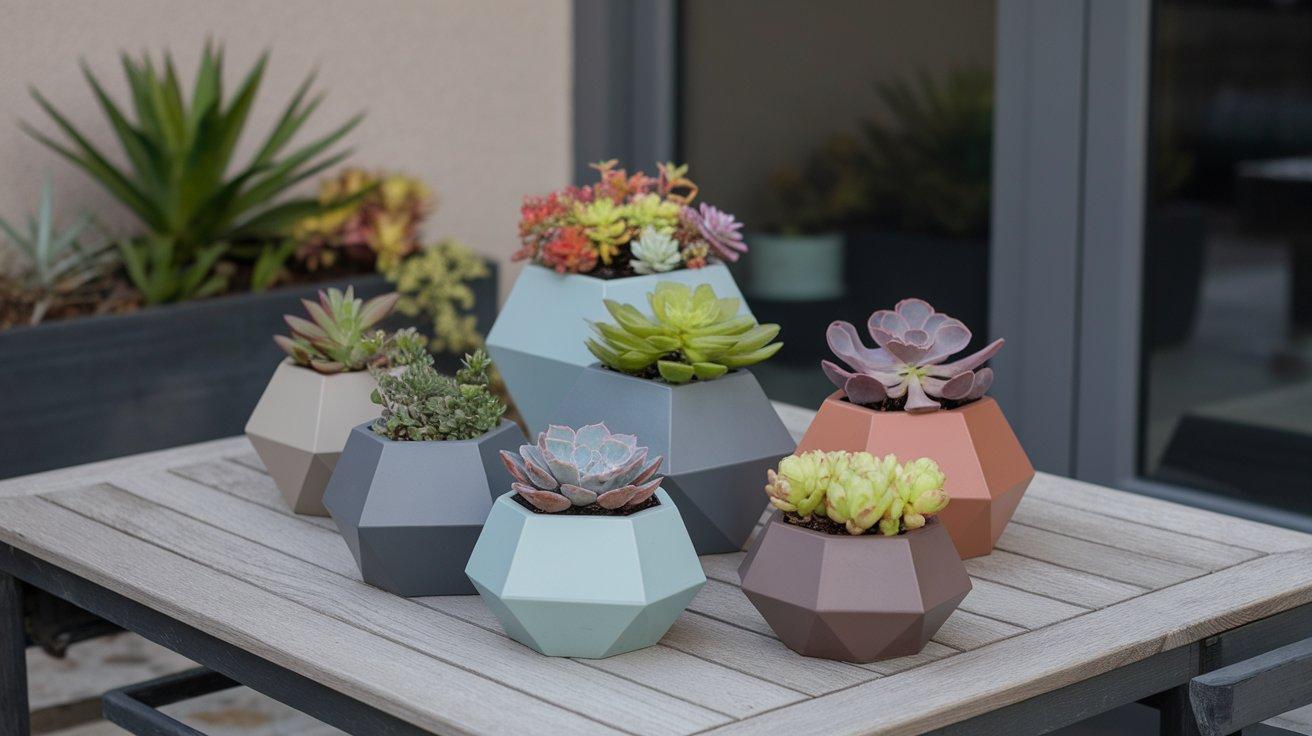
Style your space with bold, modern succulent displays in angular pots that double as striking decor accents. Group odd numbers together for visual appeal on tables or shelves.
These drought-tolerant plants forgive forgotten watering days. Mix colors and textures like smooth jade with fuzzy echeveria. Well-draining cactus soil prevents root rot issues.
5. Bamboo Privacy Planters
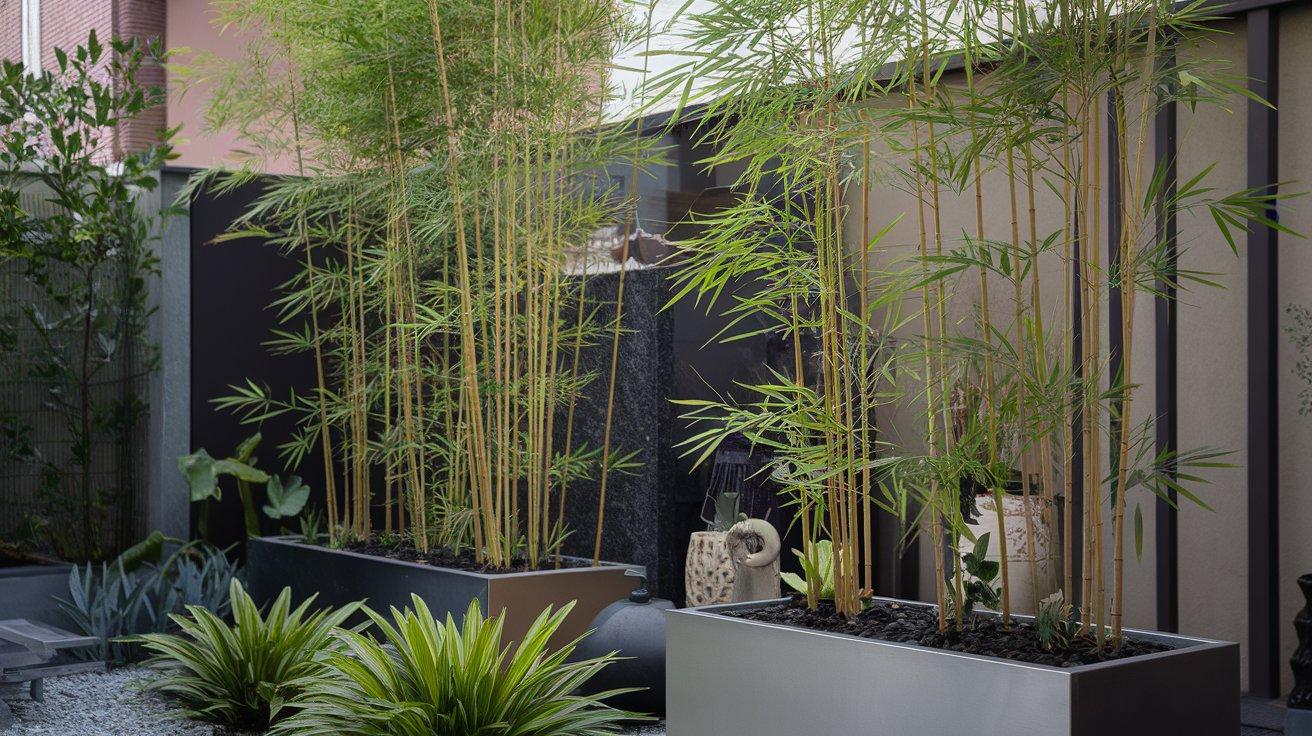
Plant clumping bamboo in tall containers to create natural screens. Choose non-invasive varieties that stay contained. These fast-growing plants block views while adding Asian-inspired calm.
Bamboo needs large pots with drainage holes to prevent root binding. Water frequently during the growing season but reduce in winter. Yellow leaves indicate either too much or too little water.
6. Tiered Plant Shelves
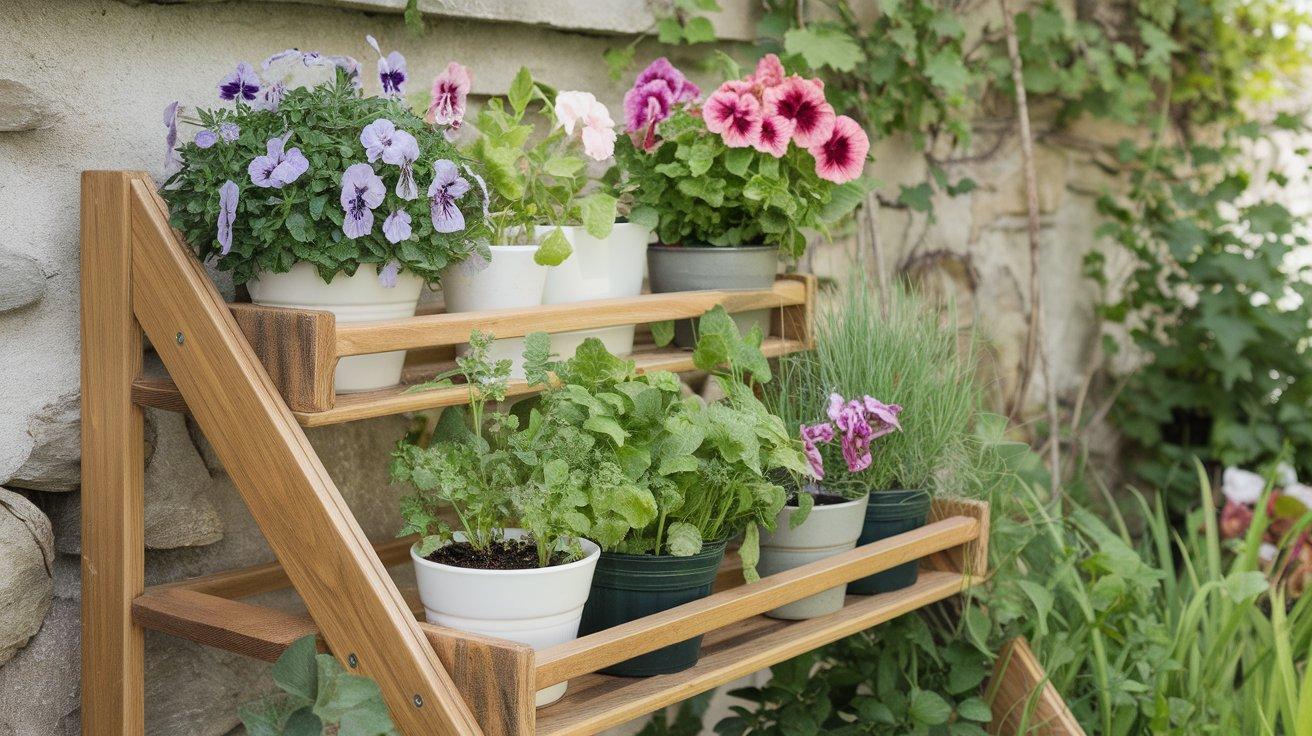
Stack wooden or metal shelves against walls for multiple growing levels. Each tier holds different plants based on light needs. Top shelves suit sun-lovers while shade plants go below.
Secure shelves firmly to prevent tipping from wind or weight. Use saucers under pots to protect wood from water damage. This vertical approach easily triples the growing space.
7. Mirror-Backed Plant Niche
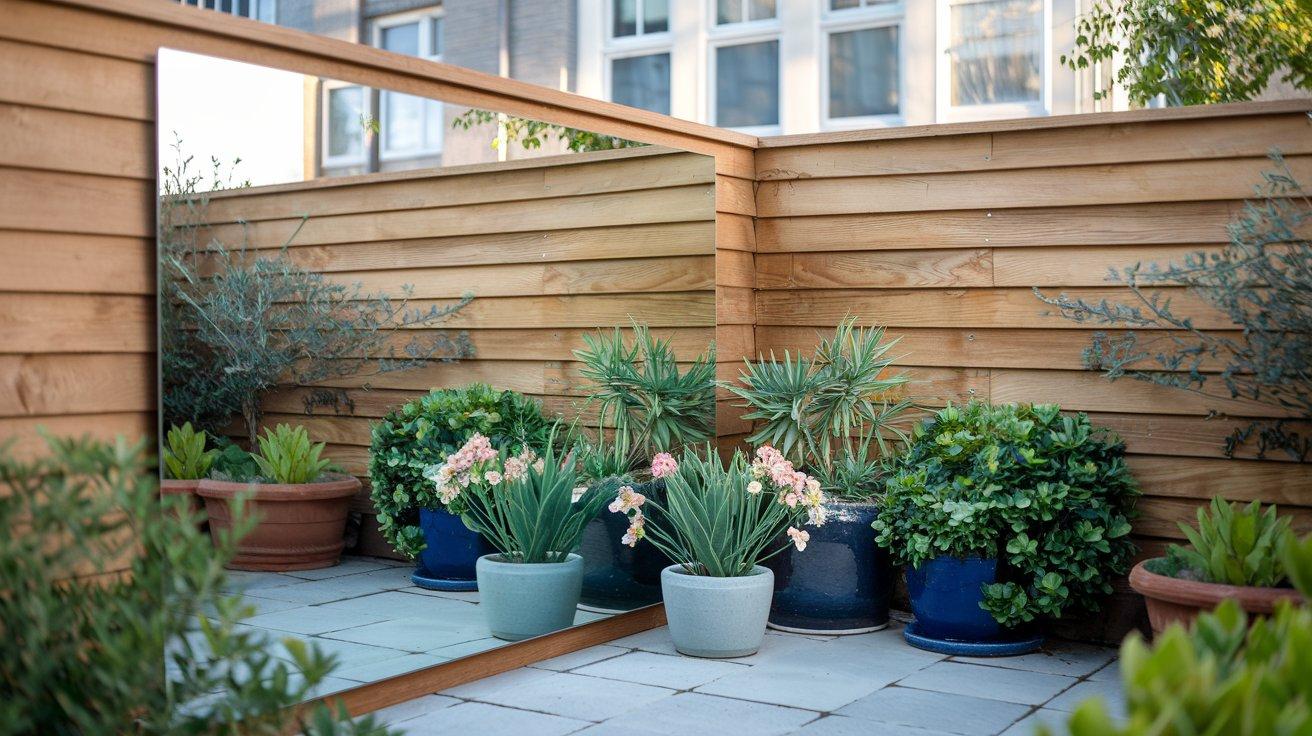
Create a special corner in your small garden by placing a mirror behind potted plants or small shrubs. The reflection doubles your greenery and makes the space feel twice as large.
Set up this illusion against a wall or fence where morning light creates gentle reflections. Use weatherproof acrylic mirrors for safety and position them to reflect your favorite garden views.
8. Small Water Fountain
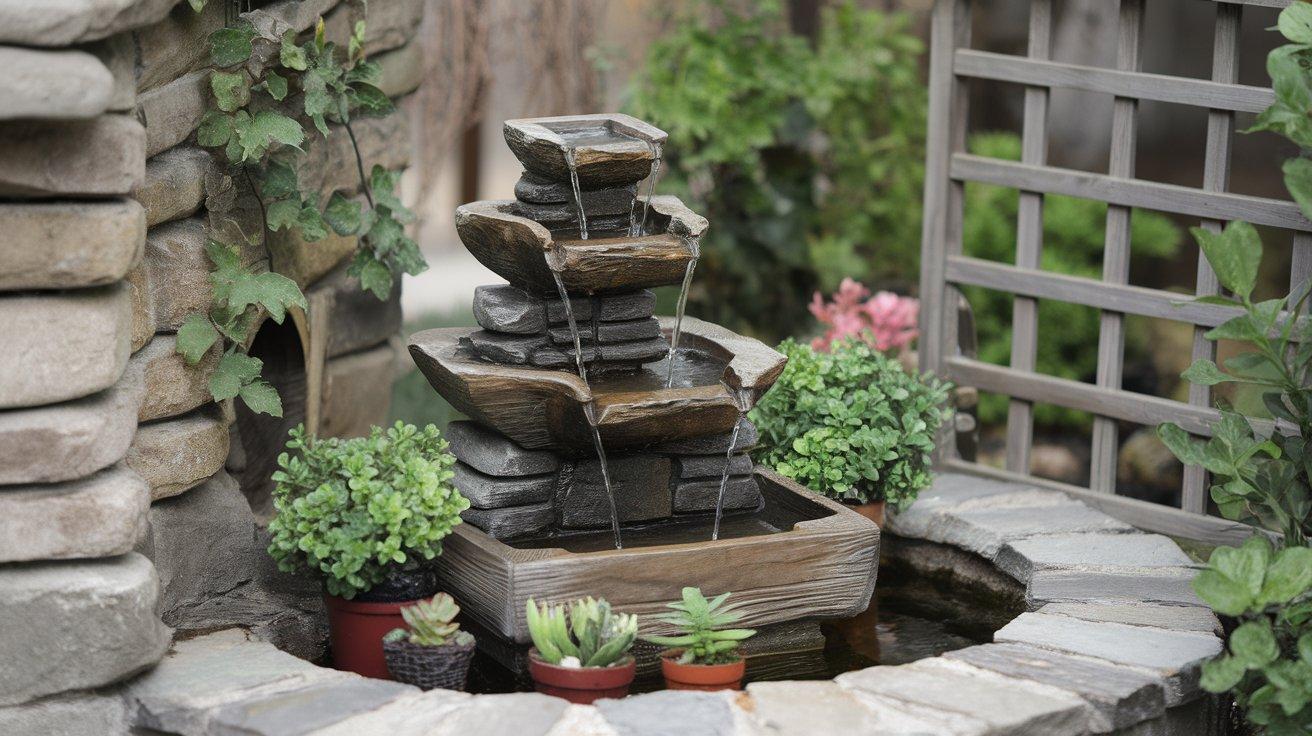
Bring soothing movement and gentle sound to your garden with a compact water fountain that doubles as a tranquil escape. The gentle water movement attracts birds and masks city noise naturally.
Clean fountains monthly to prevent algae buildup and pump clogs. Add mosquito dunks in summer to prevent breeding. Winter requires draining in freezing climates.
9. Seasonal Window Boxes
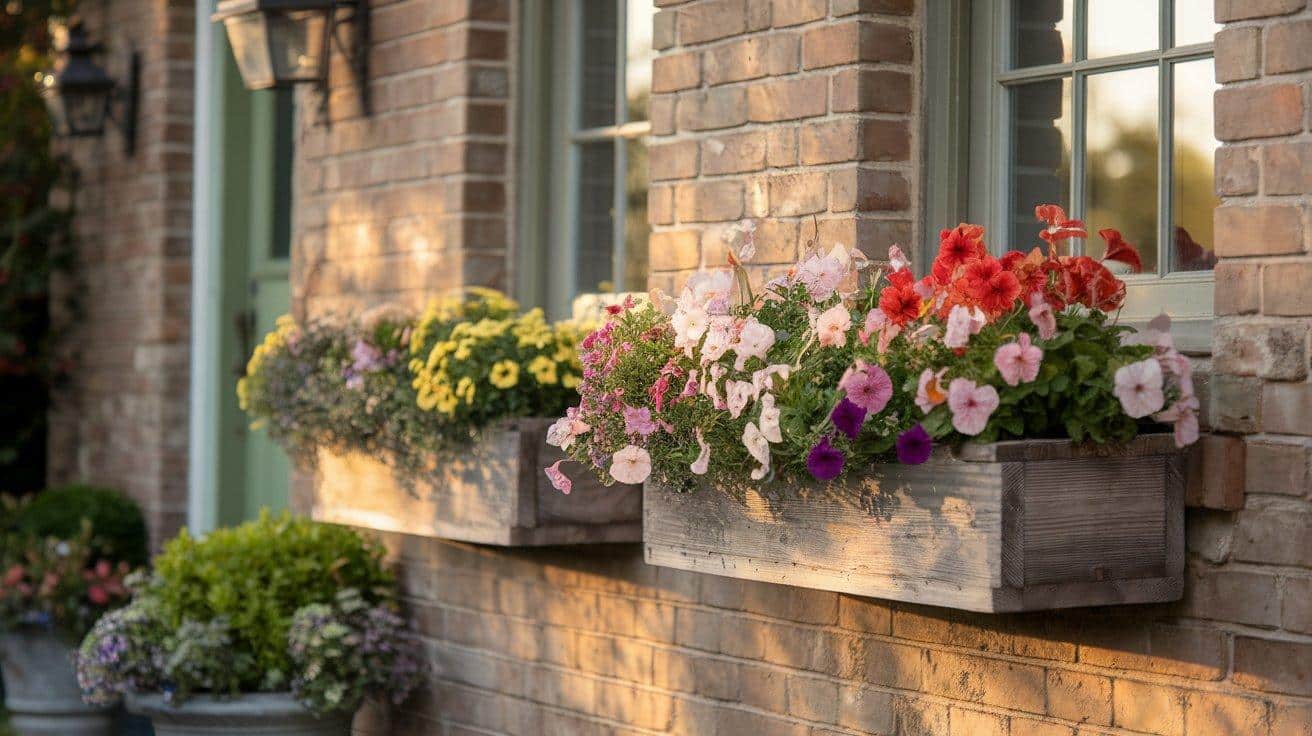
Change plantings with seasons for year-round color. Spring bulbs give way to summer annuals, then fall mums. Winter evergreens with berries keep boxes attractive in cold months.
Pre-plant bulbs in pots for easy spring swapping. Store summer plants in shady spots during transitions. Fresh potting soil each season prevents disease buildup.
10. Narrow Raised Bed
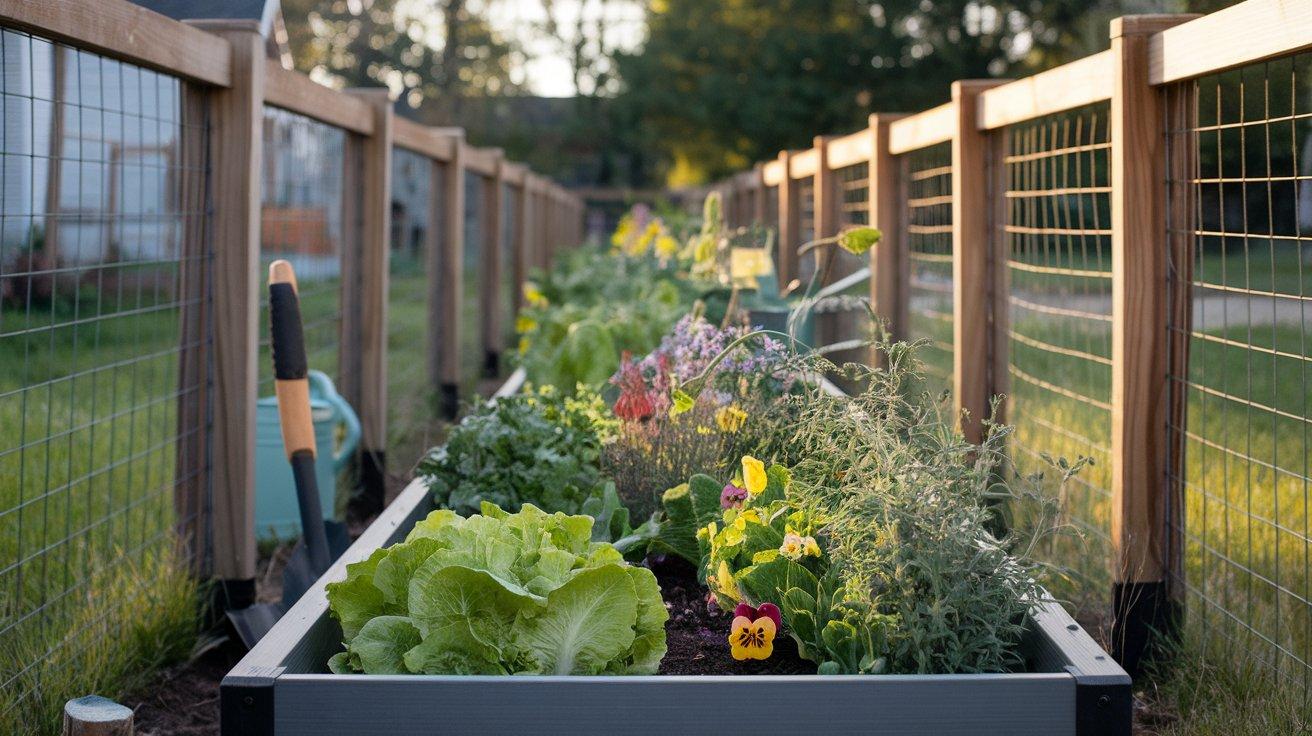
Build slim raised beds along fences or walls. Even 12-inch-wide beds grow lettuce, herbs, and flowers. Height reduces bending and improves drainage for healthier plants.
Fill beds with quality potting mix rather than garden soil. Cedar or composite materials last longer than treated pine. Drip irrigation works perfectly for these linear gardens.
11. Bench with Planters
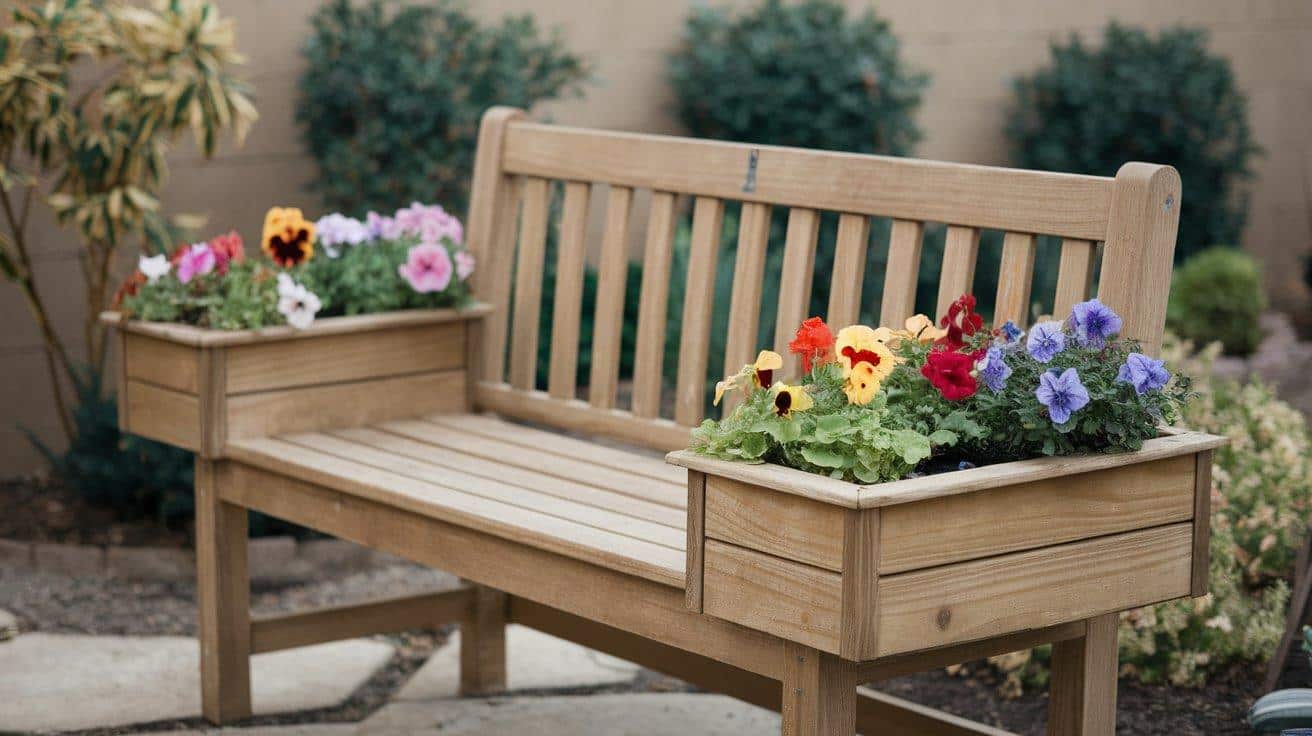
Choose seating that includes built-in planting space. Some benches have side boxes while others feature planters underneath. This dual-purpose furniture maximizes limited square footage.
Weather-resistant materials like teak or poly-lumber need less maintenance. Ensure drainage holes prevent water from rotting wooden seats. Annual flowers work better than perennials here.
12. Cinder Block Planters
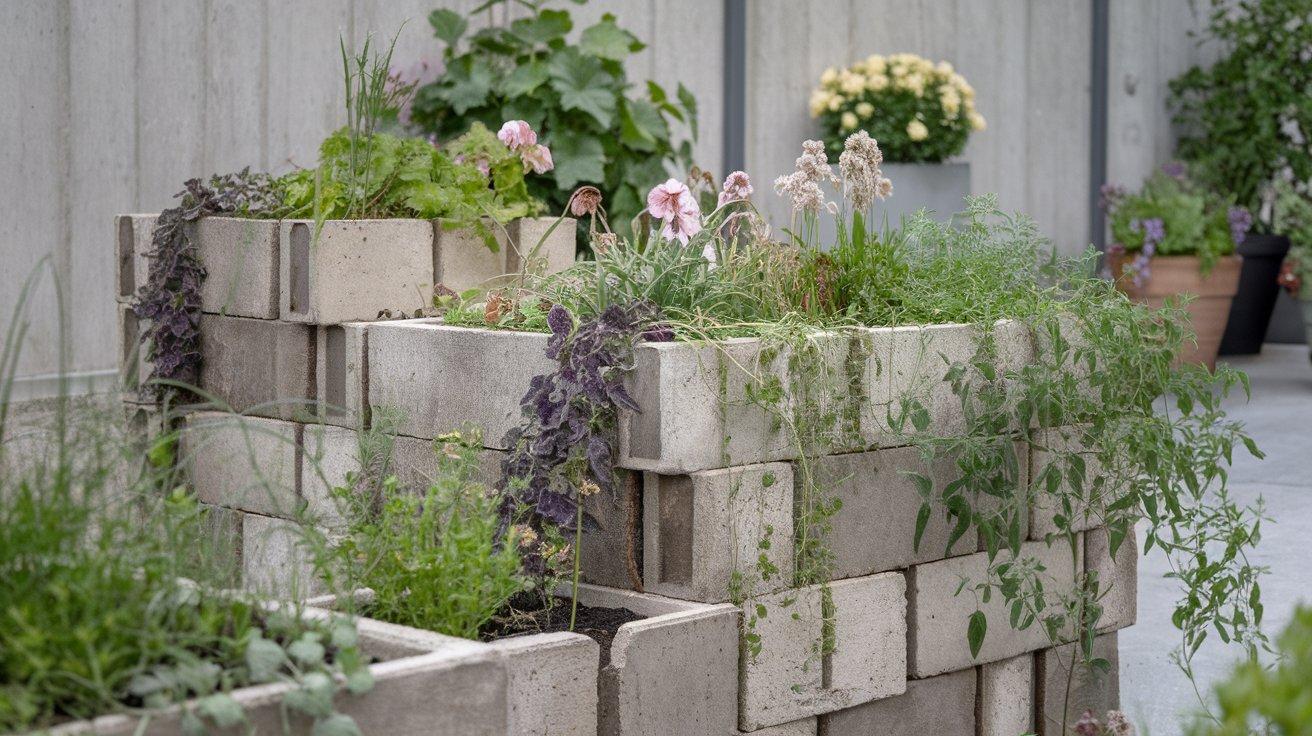
Create an industrial-chic garden with stacked cinder blocks, each hollow pocket ready for trailing blooms or hardy greens. Paint blocks bright colors or leave natural for industrial charm.
Fill holes with potting mix for better drainage than garden soil. Heat-loving plants thrive since concrete absorbs warmth. Strawberries cascade beautifully from individual pockets.
13. Climbing Plant Trellis
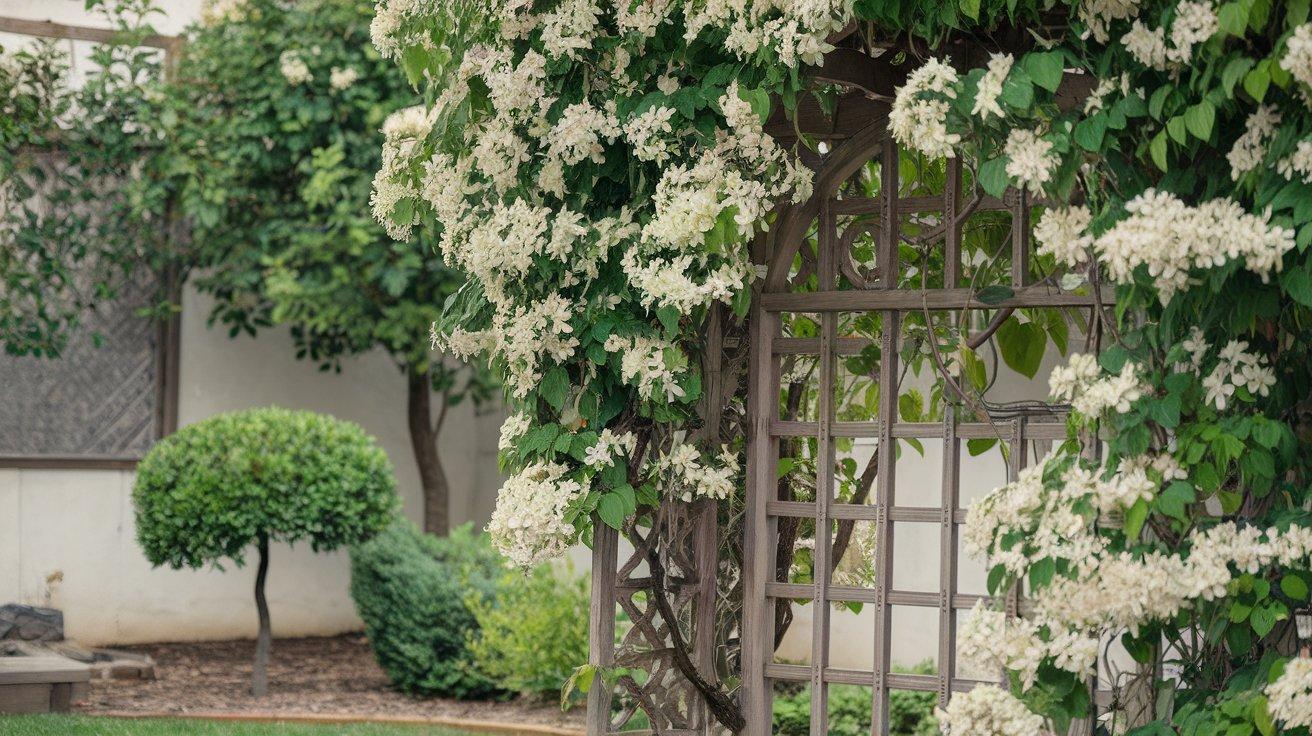
Add vertical drama with trellises that let flowering vines or edible climbers reach skyward, creating height and structure. Clematis, jasmine, and climbing roses add height without width.
Install supports before planting to avoid root damage later. Tie the new growth gently with soft plant ties. Prune after blooming to control size and encourage flowers.
14. Sunny Corner Climbing Garden
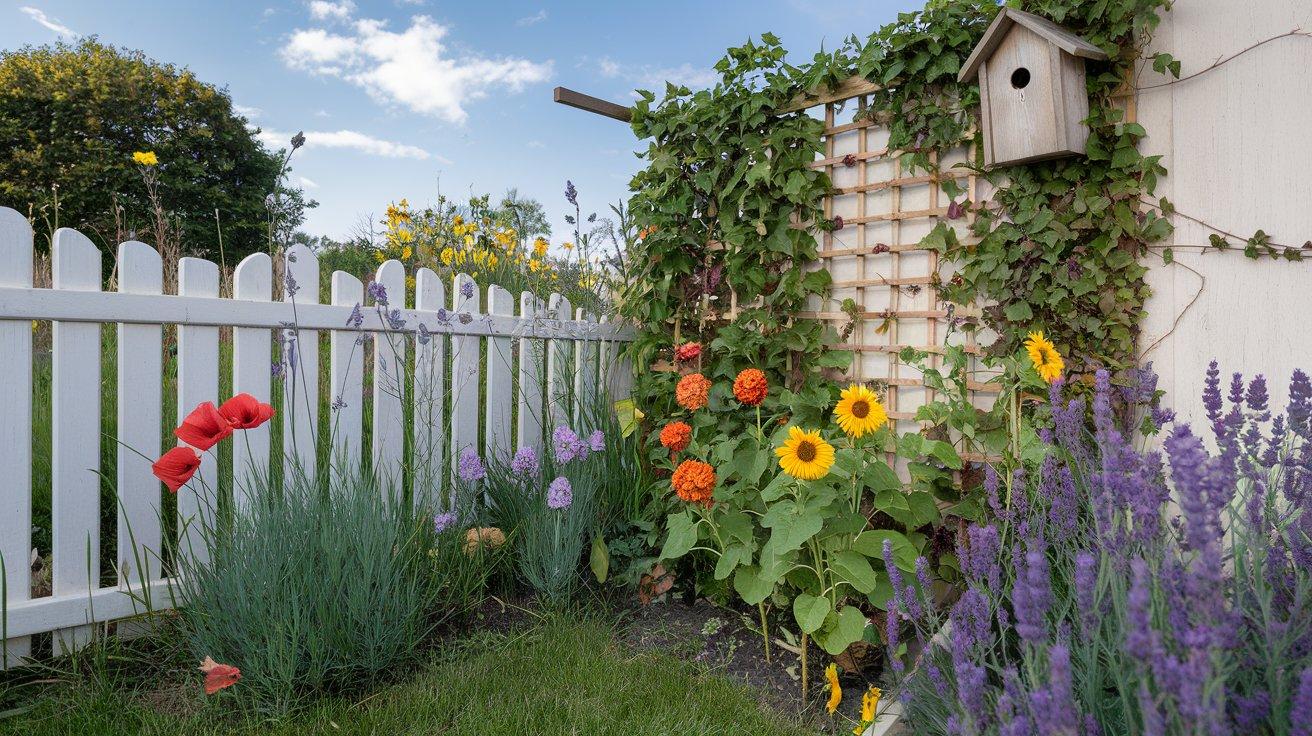
Convert a sunny garden corner with a sturdy trellis that supports climbing blooms like sunflowers and morning glories. Add lavender and poppies below for vibrant, layered color.
Ensure at least six hours of direct sunlight daily. Prune regularly to encourage new growth, extend the flowering season, and maintain a tidy, attractive garden display.
15. Ladder Plant Stand
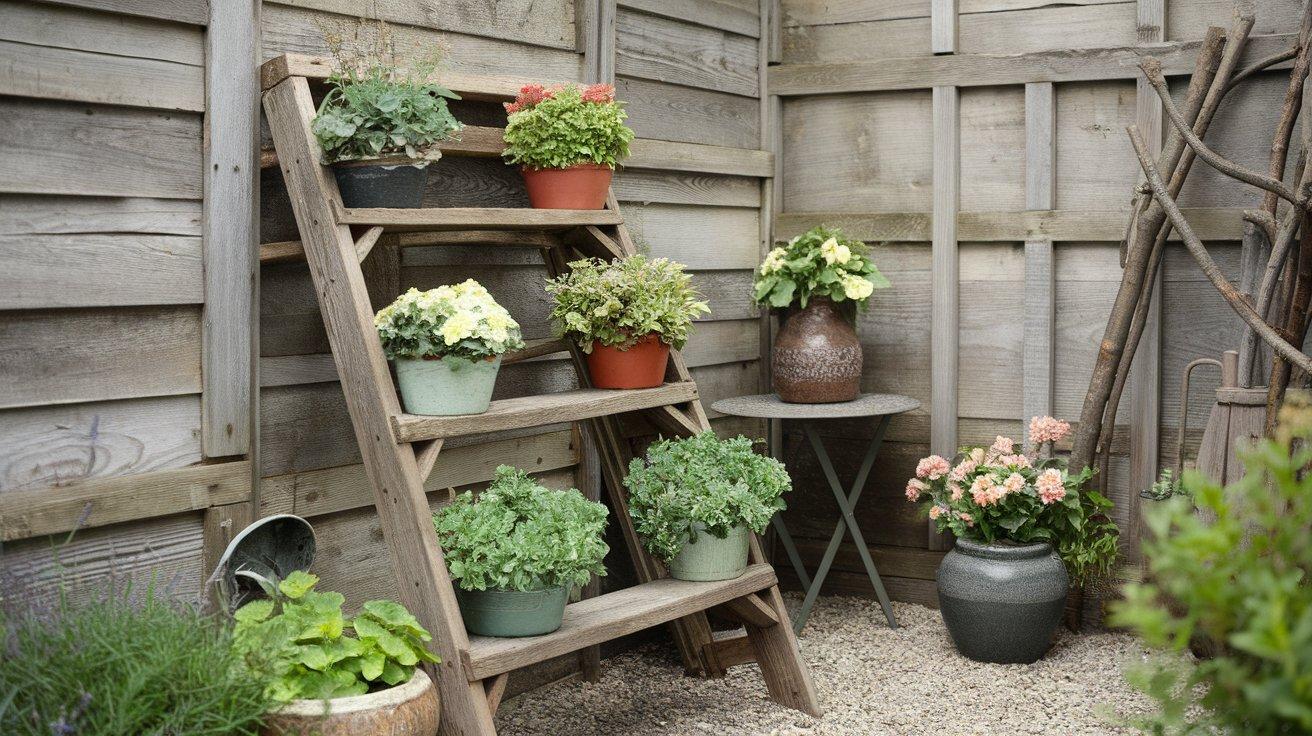
Repurpose old wooden ladders as plant displays. Each rung holds potted plants at different heights. Lean against walls or open to create freestanding A-frame stands.
Sand and seal wood to prevent splinters and weather damage. Secure pots with wire or clips on windy sites. Paint bright colors for extra garden interest.
16. Edible Veggie Garden
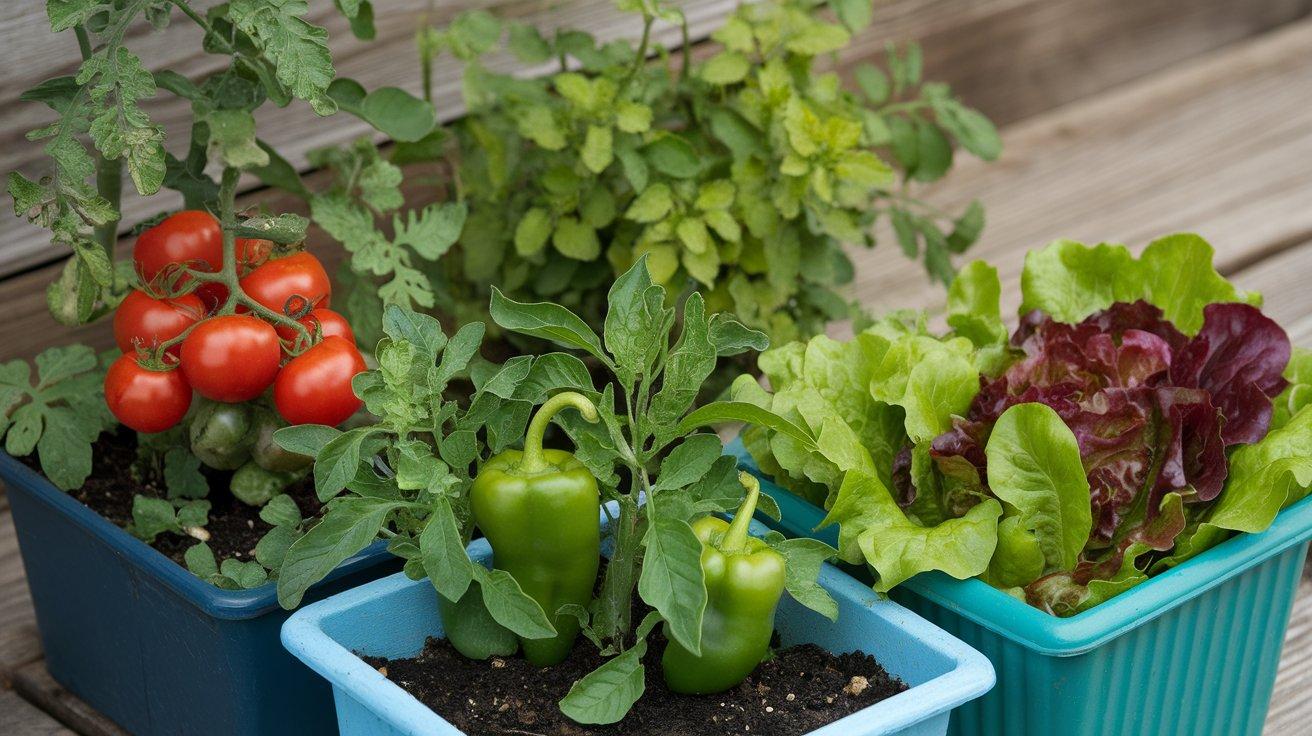
Grow vegetables in containers or small plots. Cherry tomatoes, peppers, and leafy greens produce well in tight spaces. Mix edibles with flowers for attractive and productive gardens.
Choose compact or dwarf varieties bred for containers. Succession planting provides continuous harvests from small spaces. Companion planting reduces pest problems naturally.
17. Rooftop Garden Lounge
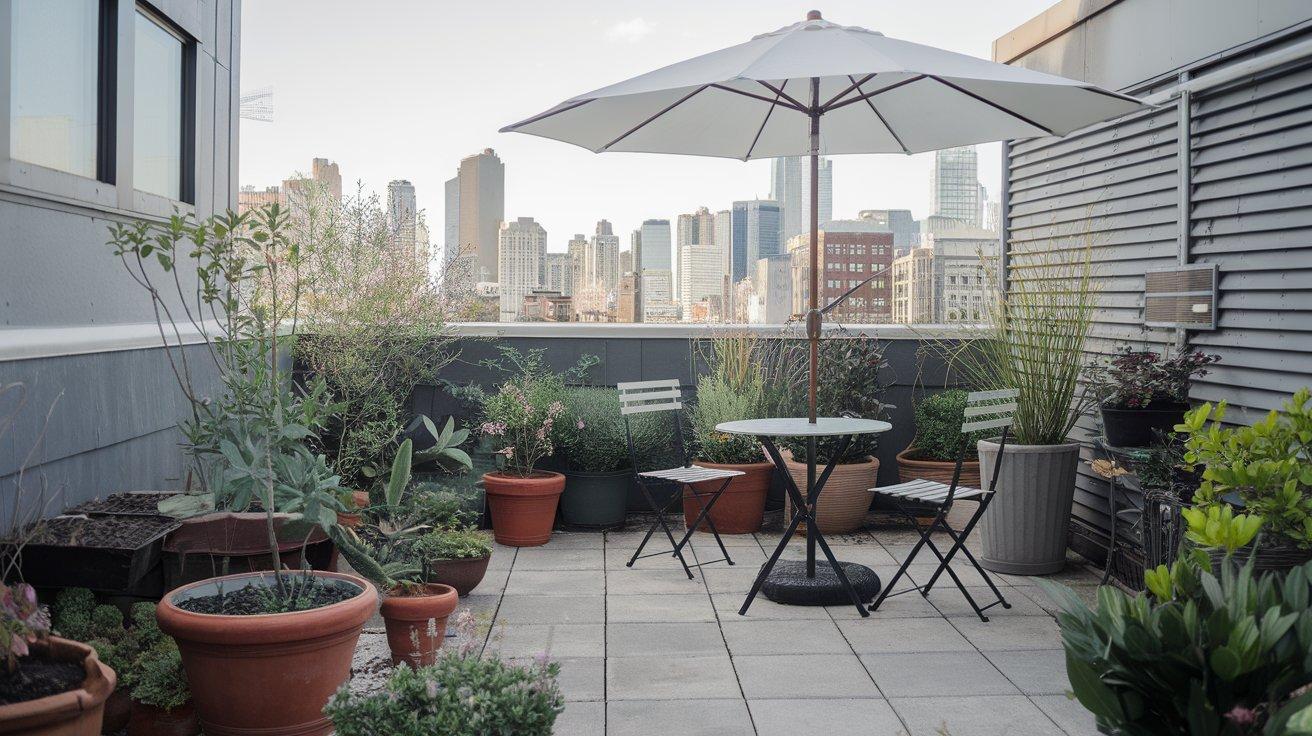
Convert flat roofs into garden retreats with lightweight containers. Use wind-resistant plants and secure all items safely. Add outdoor rugs and cushions for comfortable relaxation spots.
Check weight limits with building managers before starting. Windshields protect plants and people from gusts. Wheels under heavy planters ease rearranging.
18. Pebble Garden Path
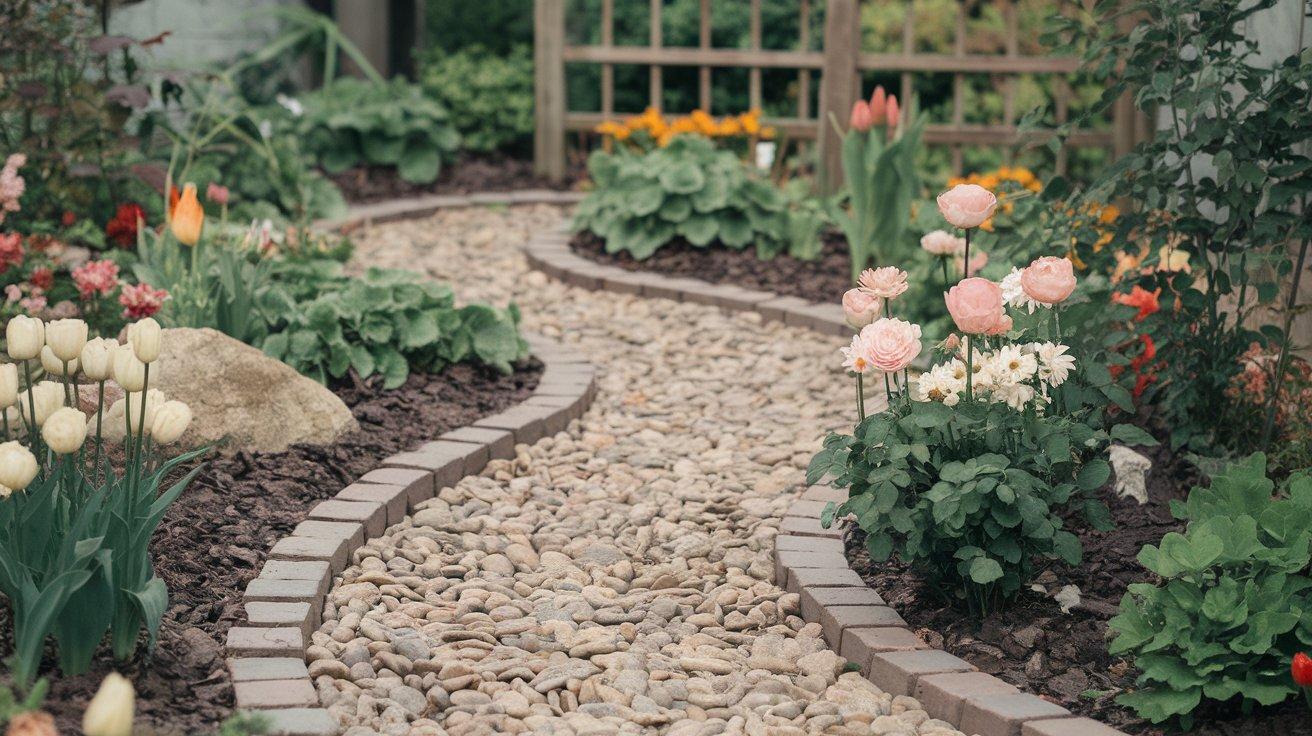
Create winding paths with river rocks or pea gravel. These permeable surfaces handle rain while defining garden areas. Edge with bricks or metal strips to contain loose materials.
Landscape fabric underneath prevents weed growth through the stones. Rake occasionally to maintain level surfaces. Different stone colors create patterns or define separate zones.
19. String Light Garden
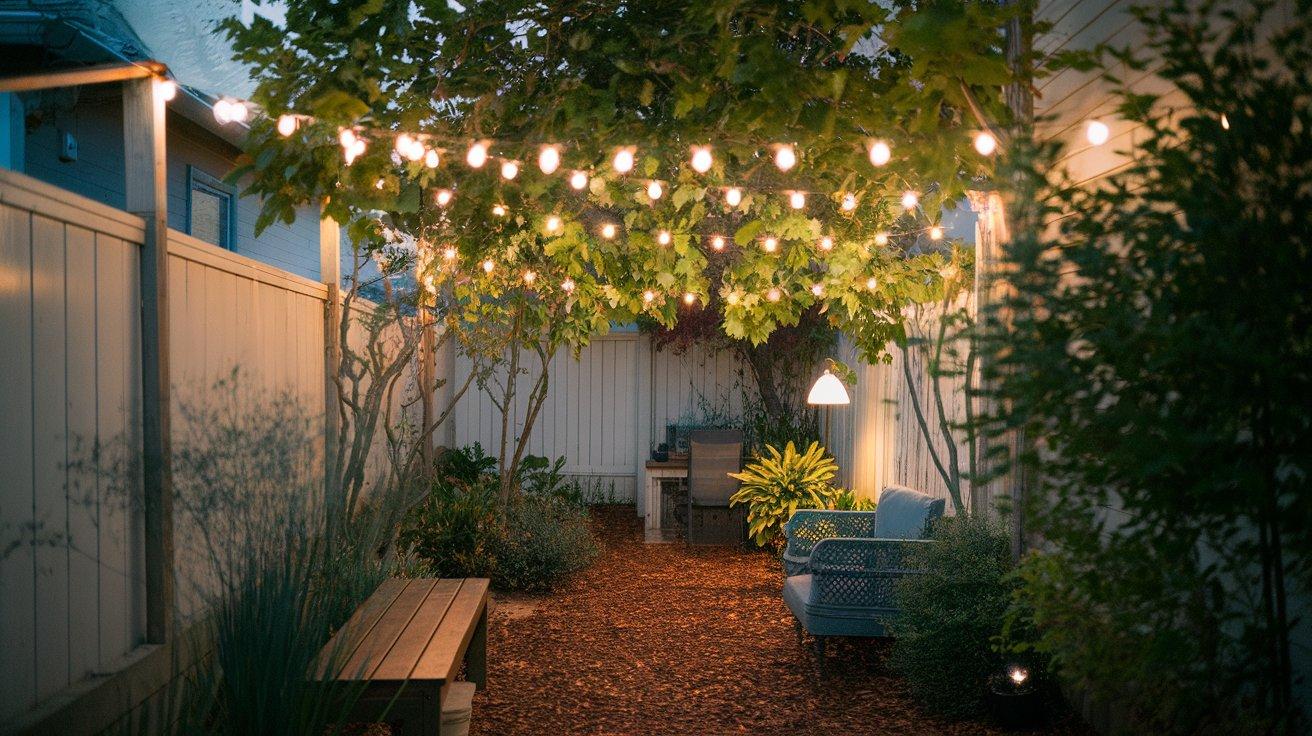
Hang warm white bulbs overhead for magical ambiance. Wrap lights around pergolas or string between posts. Solar options charge during the day and glow automatically at night.
LED bulbs last longer and use less energy than traditional bulbs. Timer functions save battery life on solar models. Weatherproof connections prevent shorts during storms.
20. Hanging Glass Terrariums
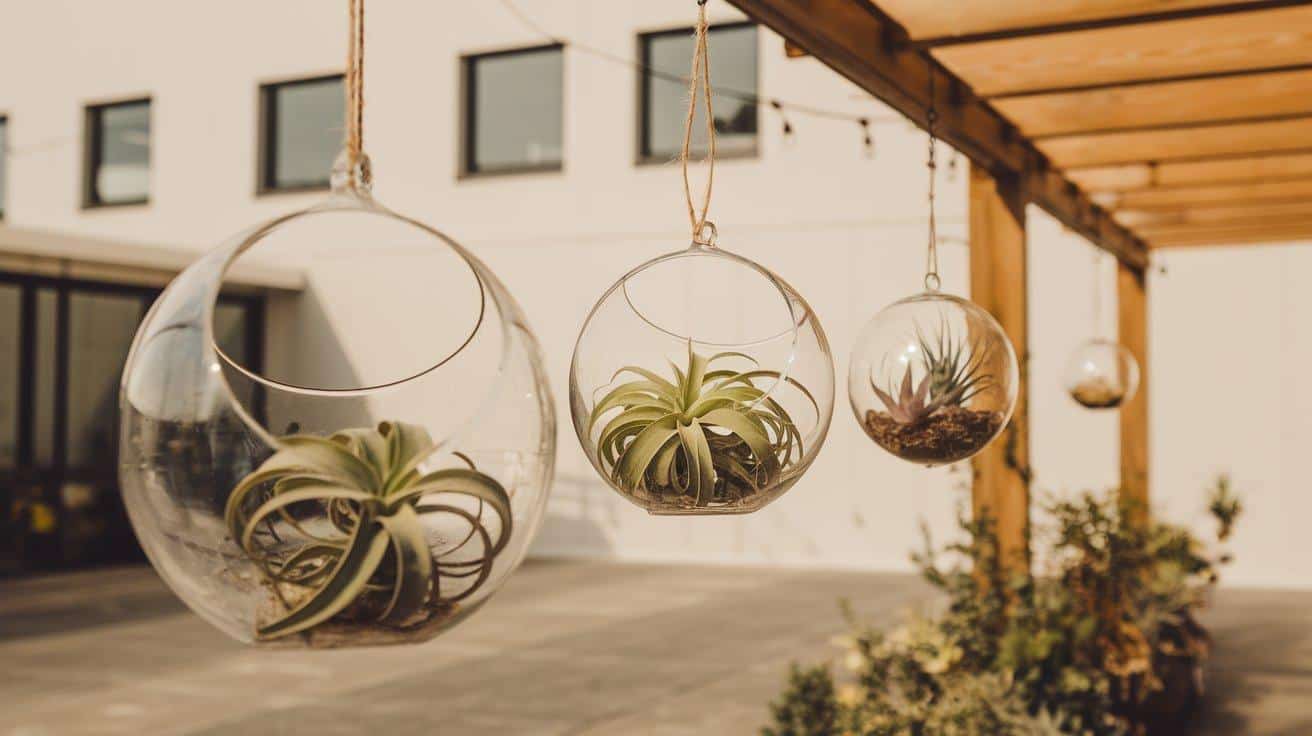
Suspend glass globes or geometric terrariums from branches or hooks. Fill with air plants, moss, or tiny succulents. These living ornaments need minimal care and water.
Mist air plants weekly or soak briefly in water. Open terrariums need less frequent watering than closed ones. Bright indirect light keeps plants healthy without overheating.
21. Mosaic Tile Planter Art
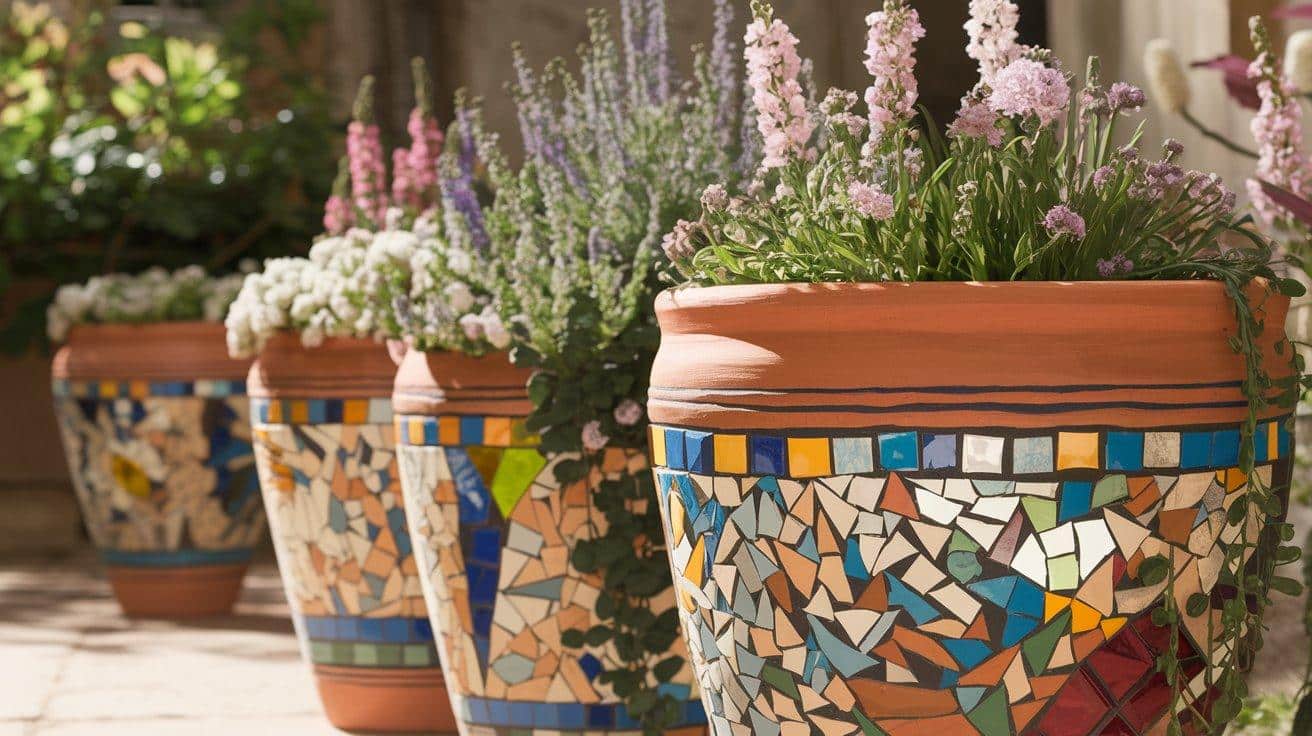
Turn plain containers into artistic focal points using broken tiles or glass pieces. Glue colorful fragments onto pot surfaces with outdoor adhesive and grout.
Seal grout properly to prevent water damage and cracking over time. These unique planters become conversation starters in any garden setting.
22. Pallet Herb Wall
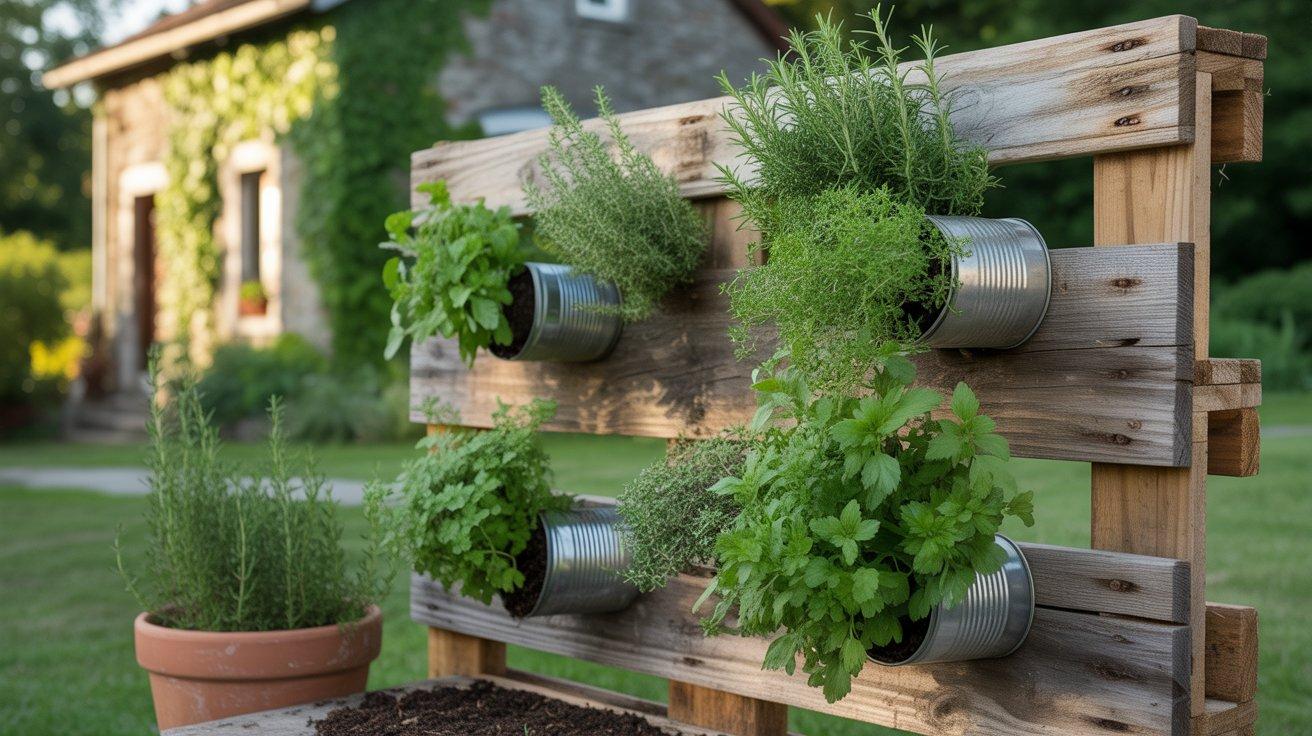
Repurpose rustic wooden pallets into a vertical culinary garden dedicated to fresh herbs right at your fingertips. Lean against walls or mount securely for a rustic growing space.
Heat-treat pallets first to kill pests and diseases. Staple fabric tightly to prevent soil spillage. Mediterranean herbs suit this well-draining vertical setup.
23. Wine Crate Planters
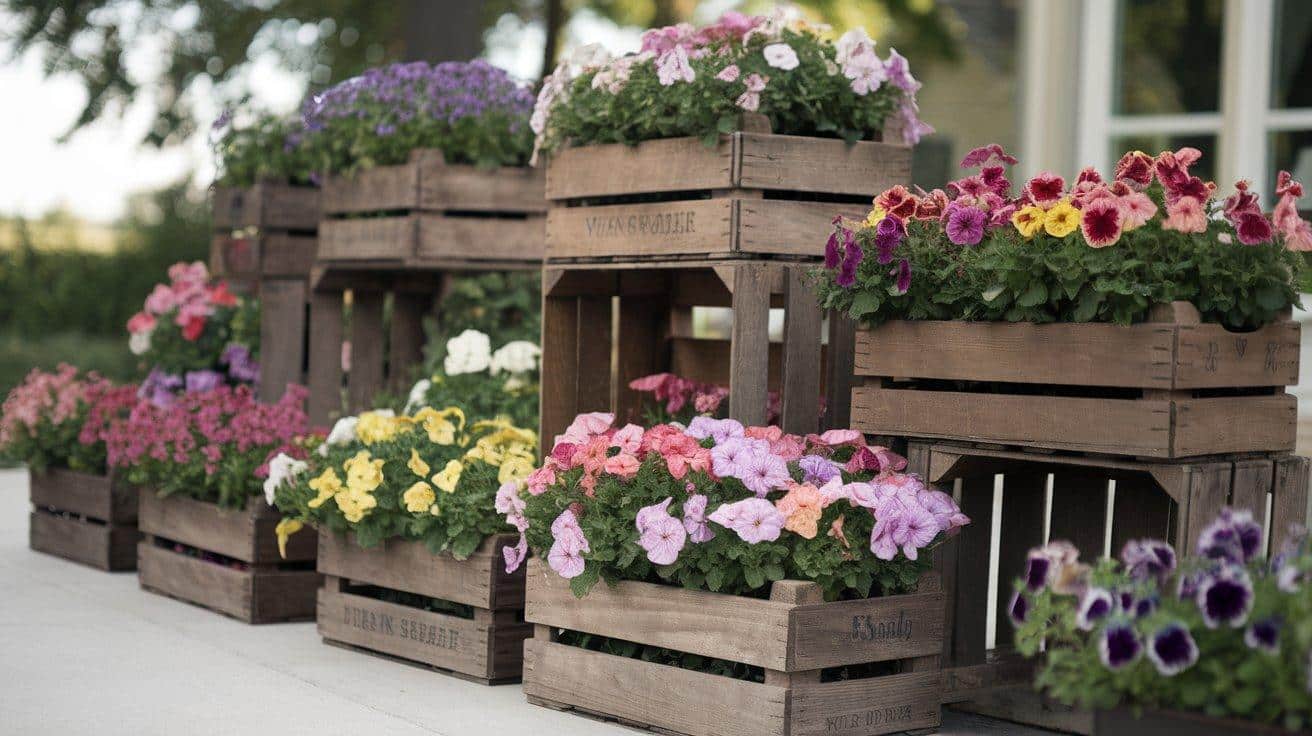
Add vintage charm with repurposed wine crates, ideal for seasonal flower arrangements or rustic herb gardens. Drill drainage holes and add plastic liners. Stack or arrange separately for flexible garden designs.
Sand rough edges to prevent splinters during handling. Waterproof sealers extend wood’s life significantly. Change arrangements seasonally for fresh looks.
24. Upcycled Gutter Planters
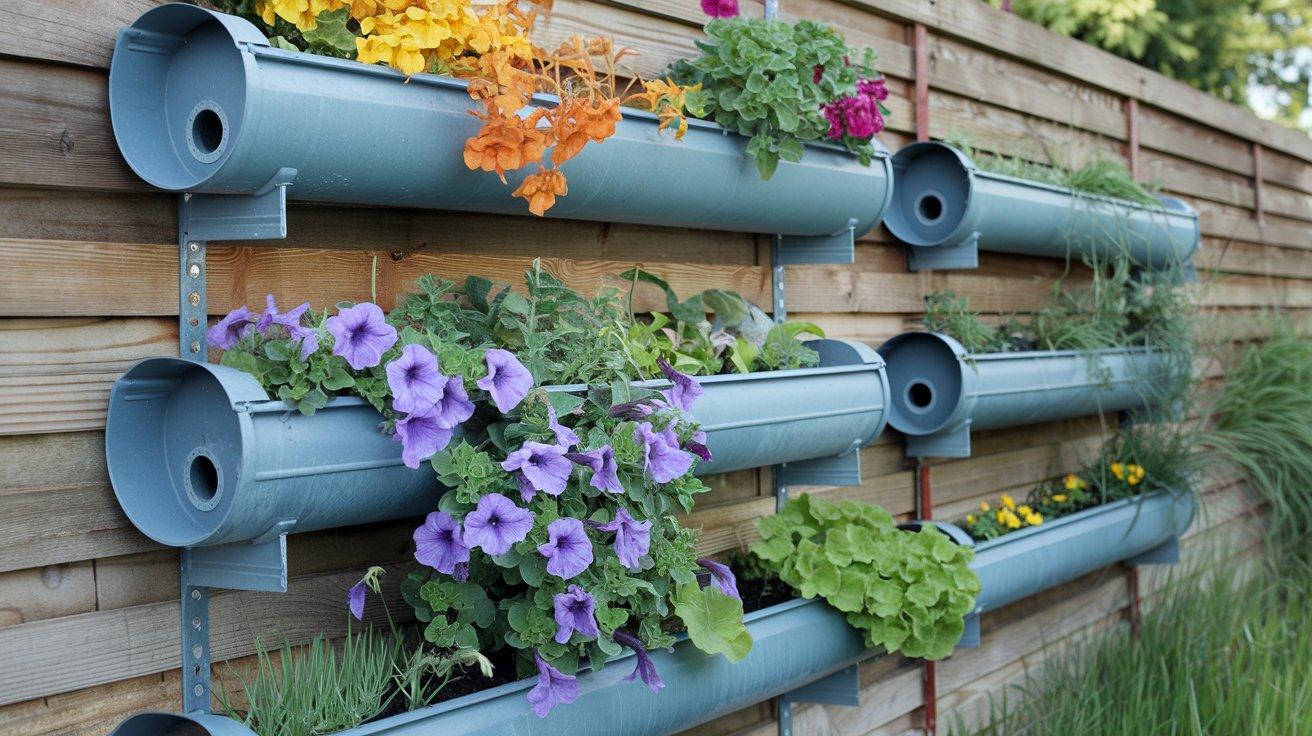
Convert old rain gutters into unique planters by mounting them horizontally on walls or fences. Fill with colorful annuals, trailing petunias, or compact herbs for continuous blooms.
Create vertical displays by spacing multiple gutters at different heights for a living wall effect. Secure with brackets every three feet and drill drainage holes to keep plants healthy.
25. Shaded Fern Garden
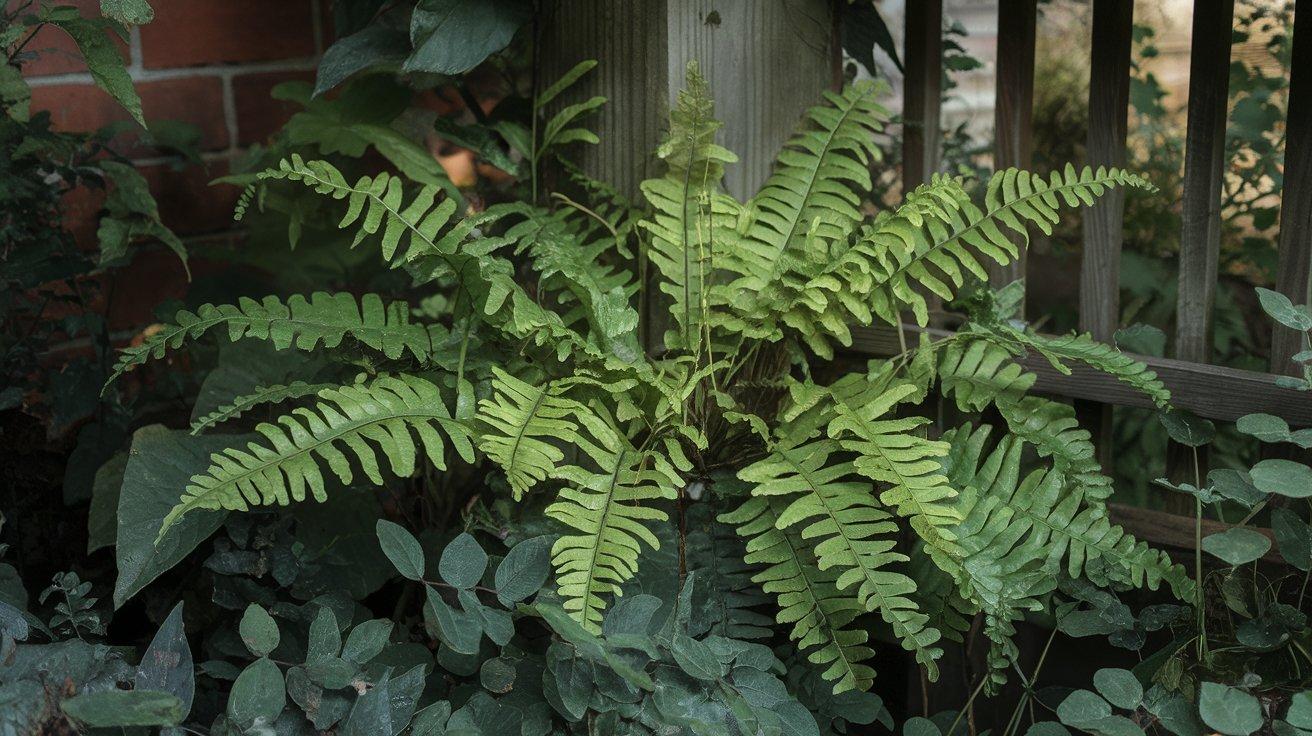
Fill the dim corners with various fern species. These prehistoric plants love low light and high humidity. Mist regularly and group together for lush, green displays.
Add pebble trays under pots for extra humidity. Remove dead fronds promptly to prevent disease. Most ferns prefer consistent moisture without waterlogging.
26. Compact Bonsai Display Shelf
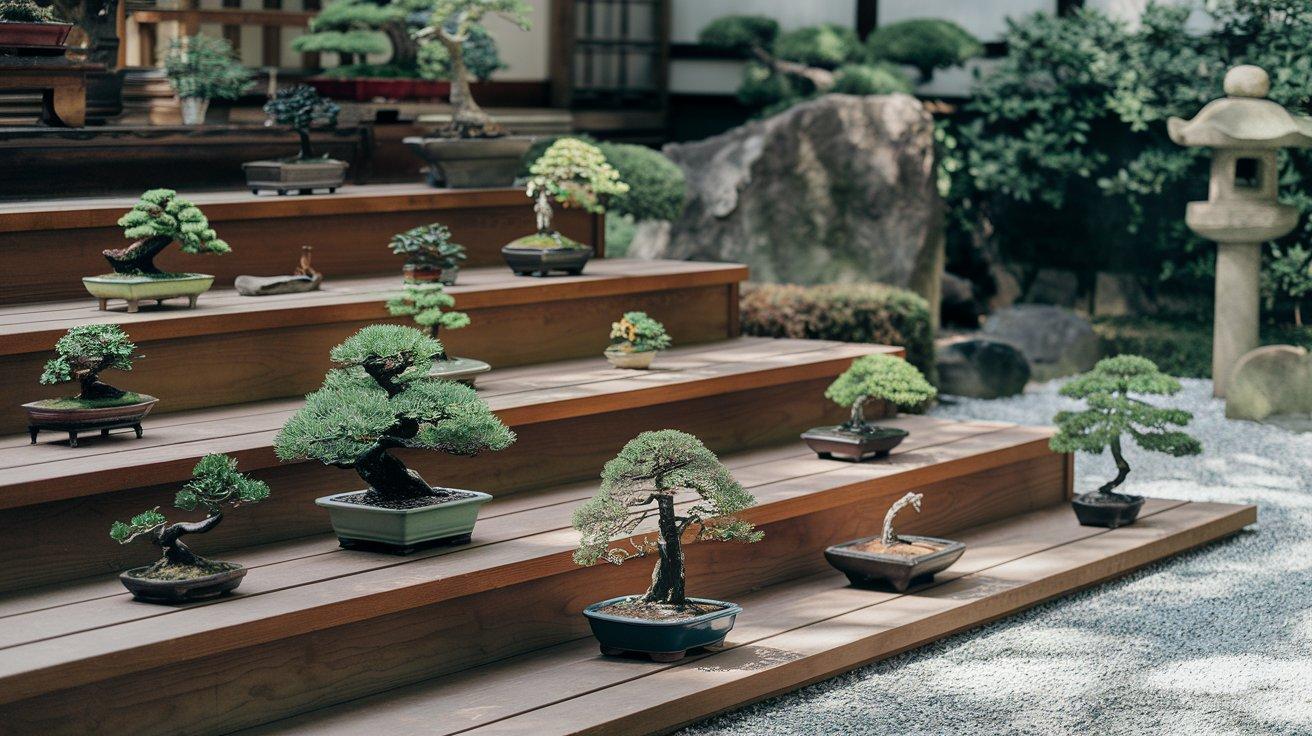
Showcase miniature trees on stepped shelving designed for bonsai collections. Different heights create visual interest while keeping each specimen visible.
Position shelves where morning sun reaches all levels evenly. Group trees with similar watering needs together for easier care routines.
27. Recycled Glass Bottle Edging
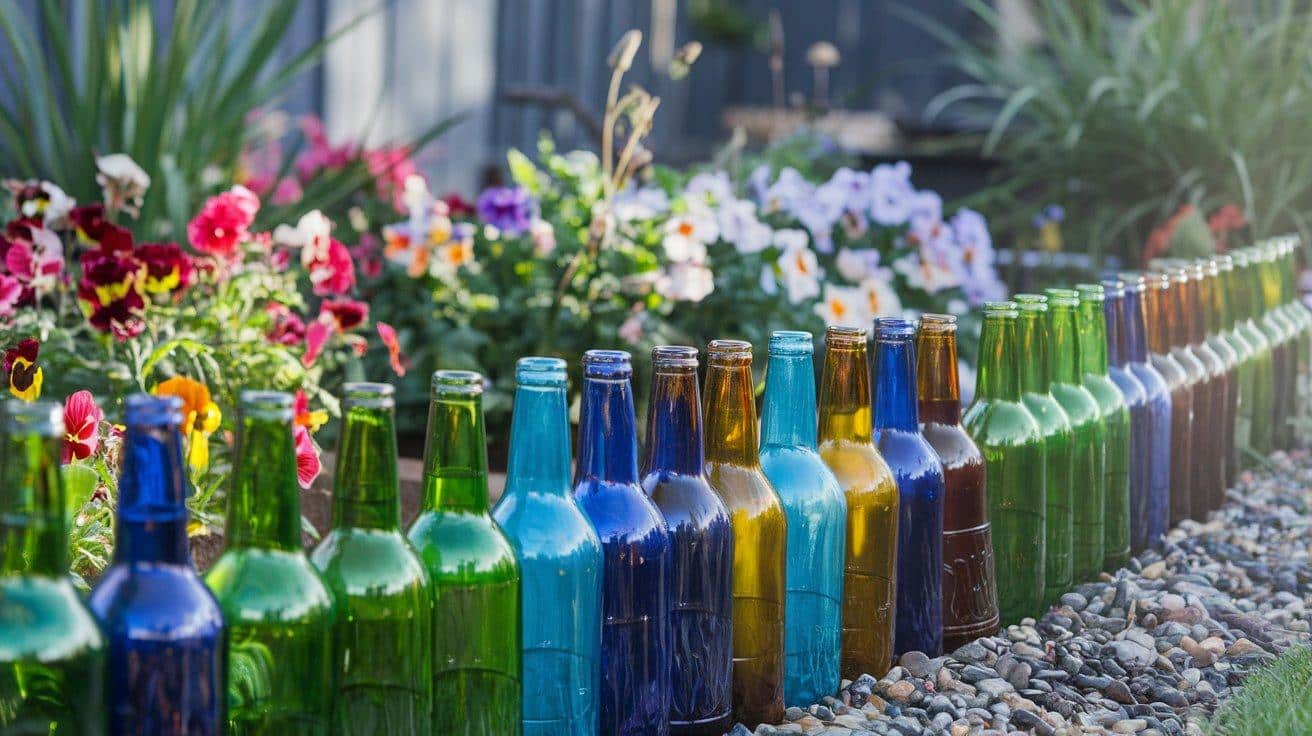
Bury colorful wine or beer bottles neck-down to create decorative garden borders. This free edging material adds whimsy while defining planting areas.
Dig trenches deep enough to secure bottles firmly in place. Morning sun creates beautiful light effects through different colored glass.
28. Vintage Furniture Planters
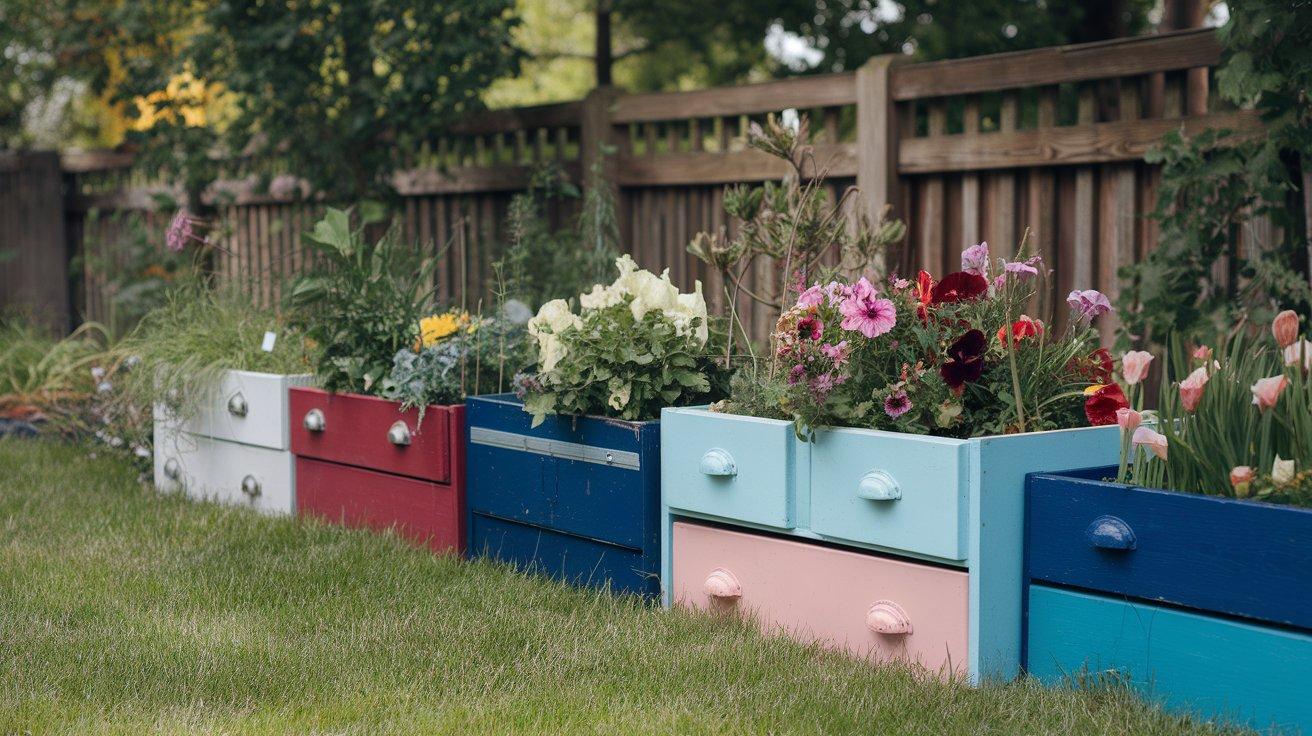
Convert old dressers, chairs, or bathtubs into quirky planters. Drill drainage holes and treat wood against rot. These conversation pieces add personality to bland spaces.
Line drawers with plastic before adding soil. Remove fabric from chair seats before planting. Metal pieces need rust treatment for longevity.
29. Miniature Fairy Garden in A Barrel
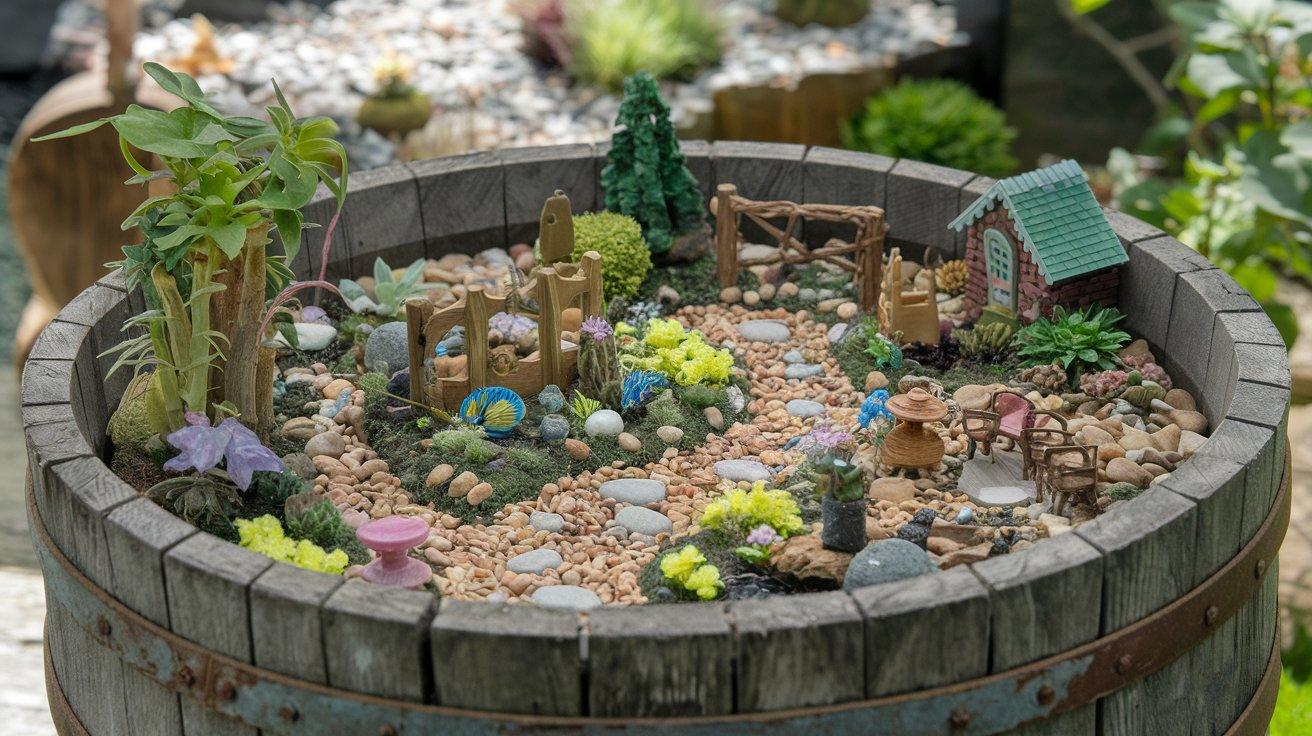
Create whimsical miniature landscapes in half-barrels or large containers. Use small plants, tiny furniture, and miniature accessories for enchanted displays.
Choose slow-growing plants that stay naturally small without constant pruning. Add pebble paths, tiny bridges, or miniature houses for detail.
30. Color-Themed Pots
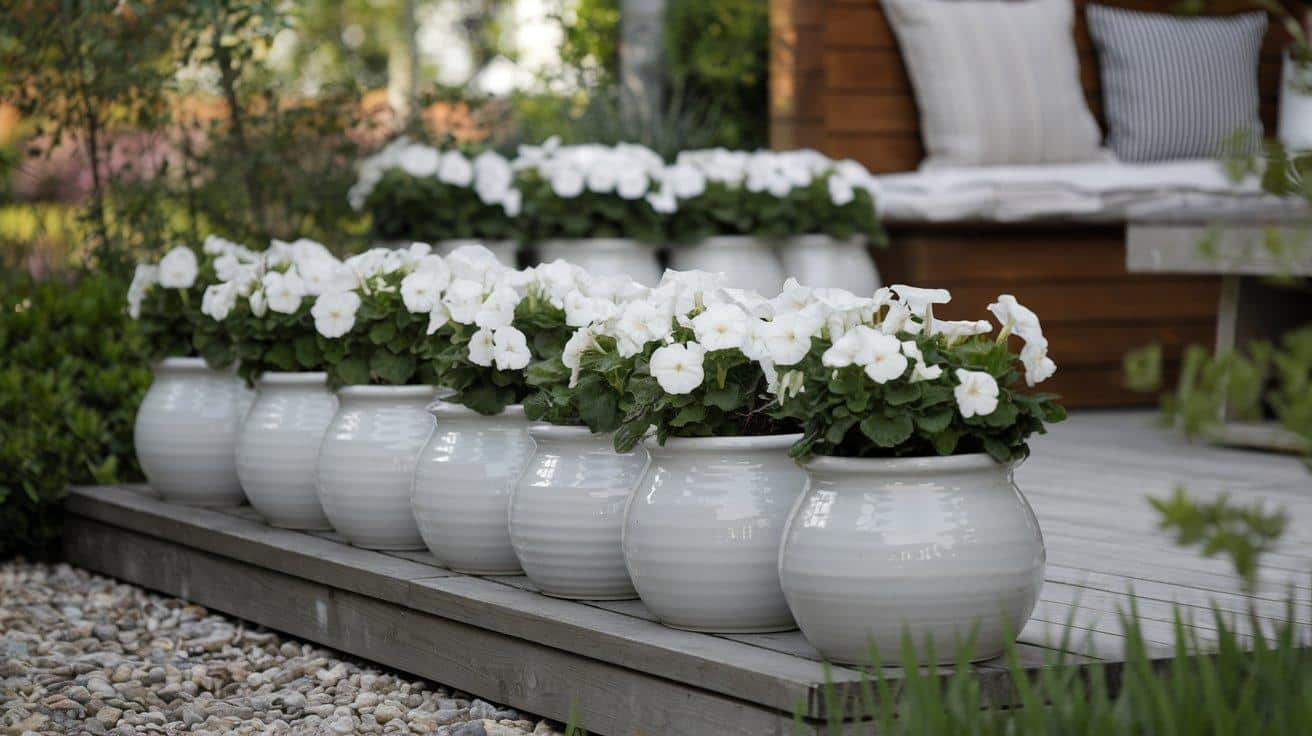
Group containers with matching colors throughout your small space for visual unity. White pots with white blooms create calm corners, while bright containers near doorways add cheerful energy.
Arrange these themed container collections on steps, shelves, or grouped on the ground. Neutral pots showcase colorful plants best, while glazed options need less frequent watering.
31. Desert Cactus Garden
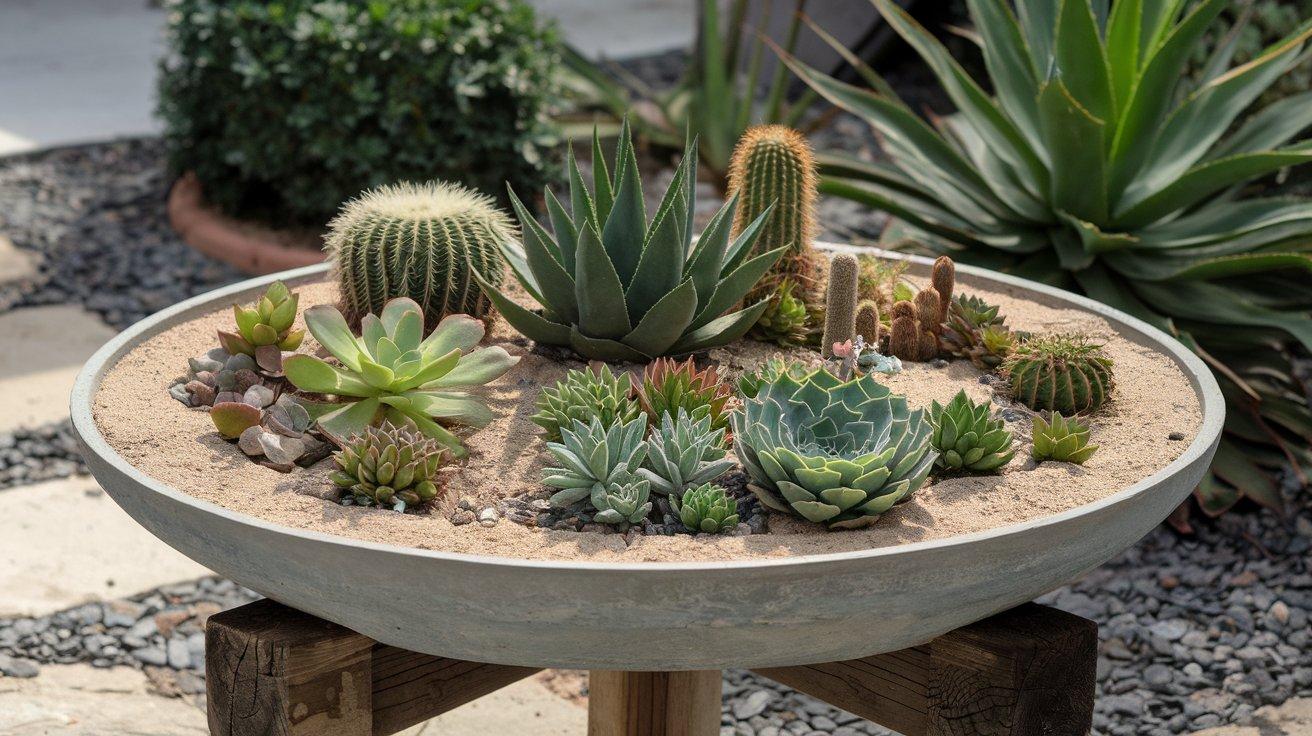
Create a desert landscape in your small garden using a wide, shallow container filled with cacti and succulents. Use sandy, well-draining soil and arrange plants by height for sculptural interest.
Place this low-maintenance container in your garden’s sunniest spot on a table or stand. The drought-tolerant collection needs minimal watering and thrives with full sun exposure.
Care & Maintenance Tips for Your Small Garden
Keeping your small garden ideas thriving requires regular attention, but it stays manageable with the right approach. Follow these simple practices for year-round success.
- Water containers more frequently than ground gardens since they dry out faster in the sun and wind.
- Feed plants every two weeks during the growing season with diluted liquid fertilizer for continuous blooms.
- Prune regularly to maintain shape and size, removing dead flowers and leaves promptly.
- Check for pests weekly by inspecting under leaves and treating problems early before they spread.
- Refresh potting soil annually in containers to replenish nutrients and prevent disease buildup.
- Protect tender plants during extreme weather by moving containers or covering with frost cloth.
Final Thoughts
Creating a thriving garden in limited space proves that bigger isn’t always better.
These ideas show how creativity and thoughtful planning turn any small area into a green retreat.
Whether you choose vertical gardens for blank walls or container arrangements for sunny patios, each method offers unique benefits.
Success comes from selecting options that match your specific conditions and maintenance abilities. Start with one or two ideas that excite you most, then expand as confidence grows.
Small gardens often become favorite spaces because they’re manageable yet rewarding. Your compact garden can provide fresh herbs, beautiful flowers, or peaceful moments just steps from your door.
Which ideas will you try first? Let us know in the comments below!
Browse more easy ways to style and refresh your space.
Frequently Asked Questions
How to Set up A Mini Garden?
Mix soil with sand for better drainage. Add sand on top. Water with droppers and spray daily to keep plants fresh.
How to Layout a Garden for Beginners?
Place tall plants at the back, medium-height plants in the middle, and short ones in front. Add pollinator plants to attract helpful insects.
What Is the Most Common Garden Layout?
Straight rows running north to south work best. This direction provides optimal sun exposure and air circulation for healthy plant growth.
